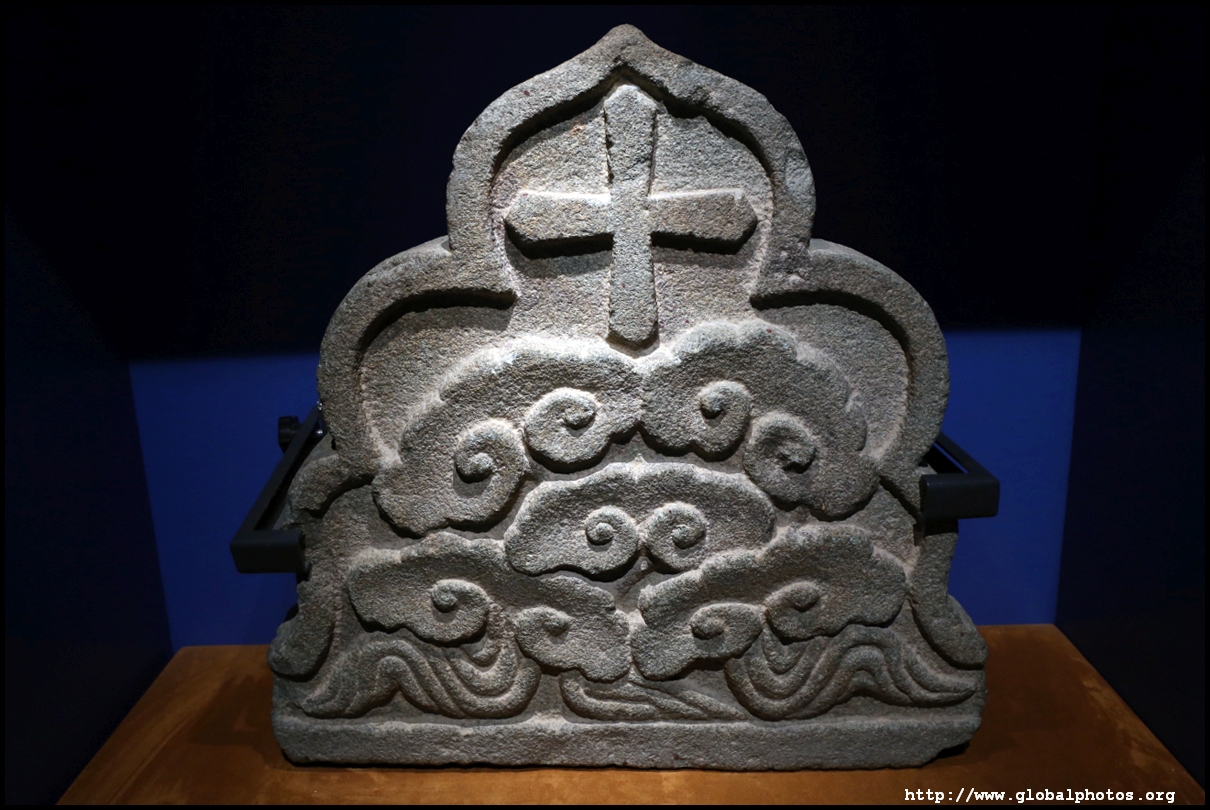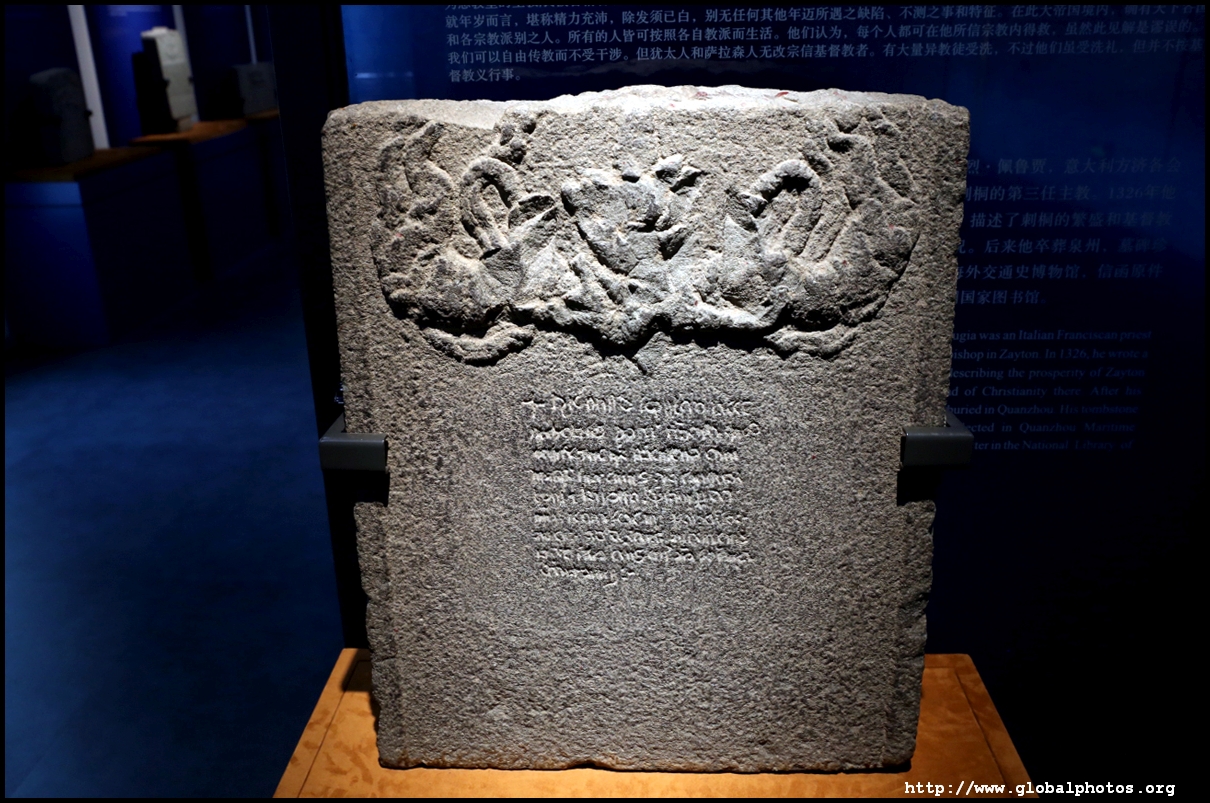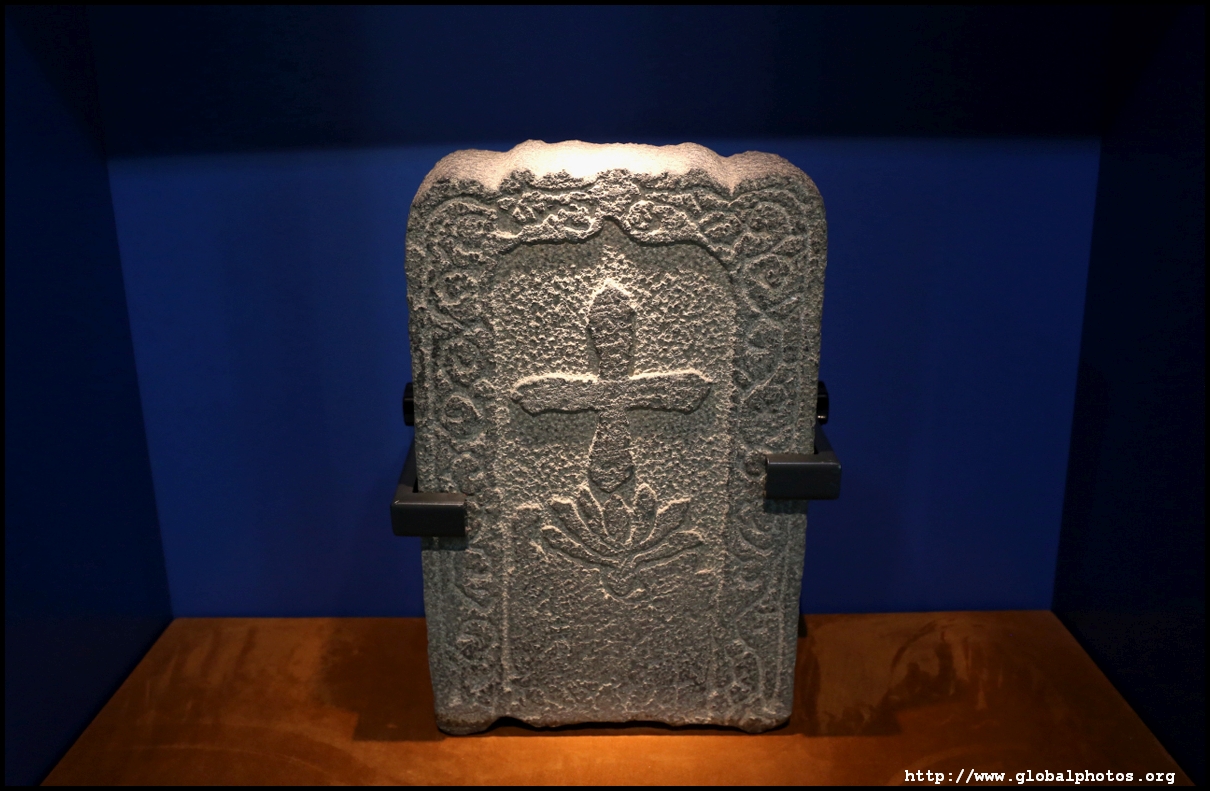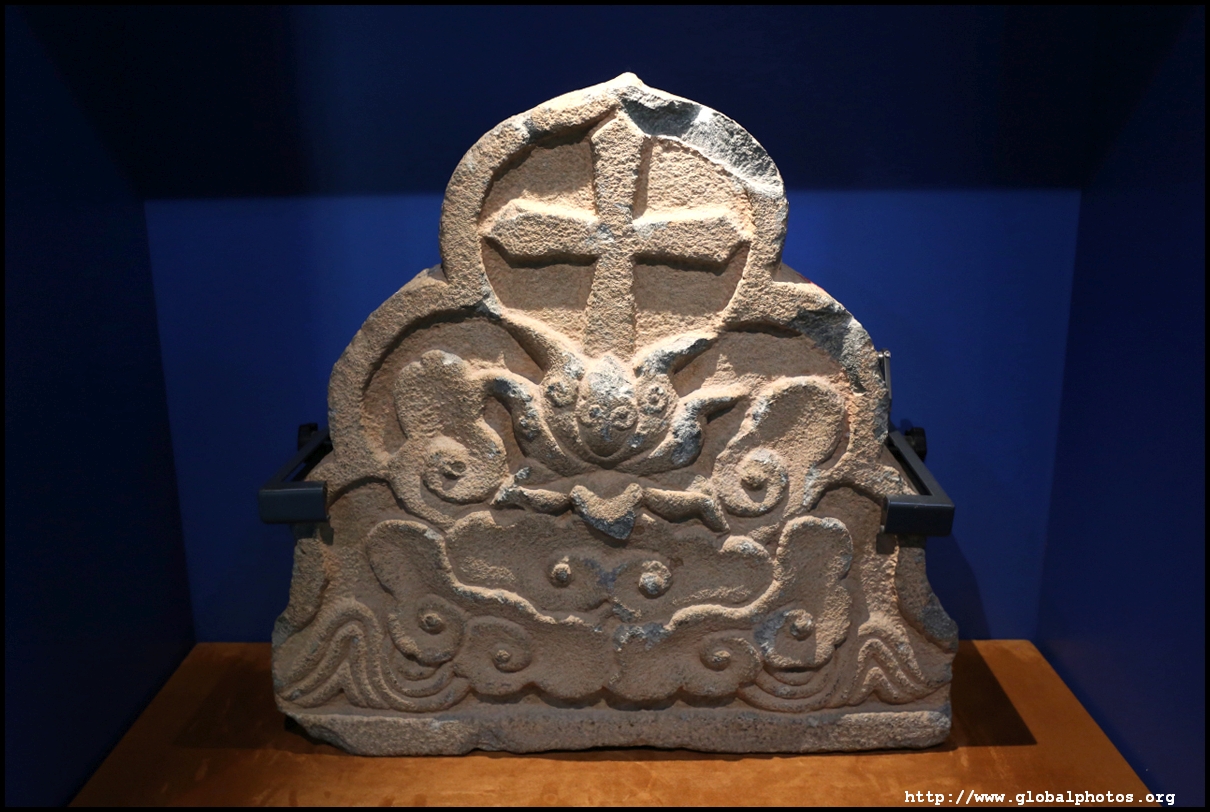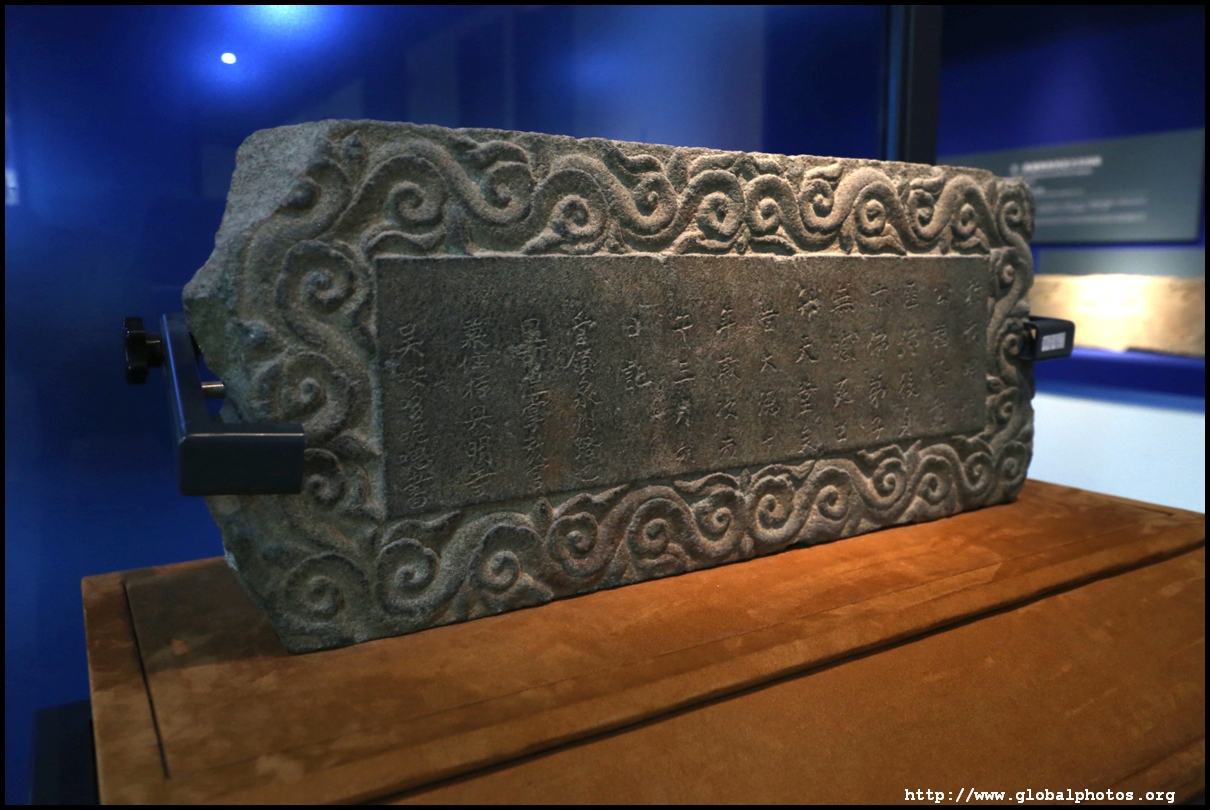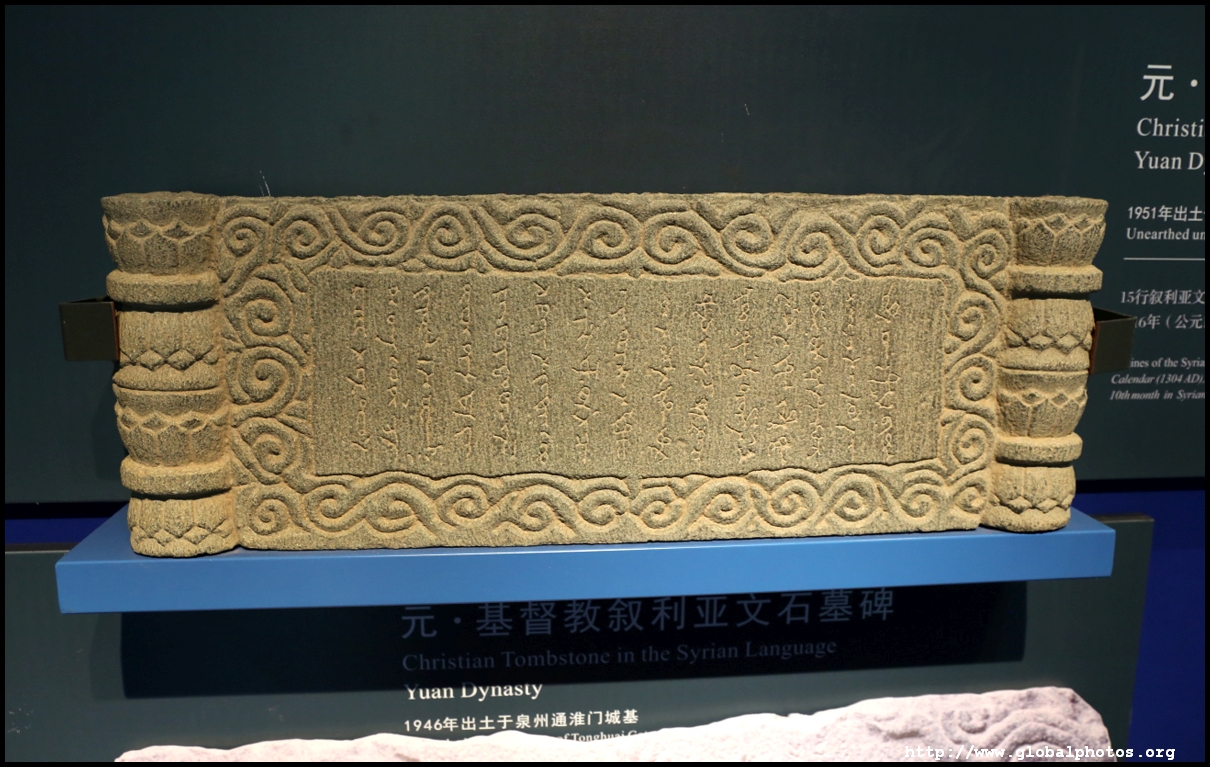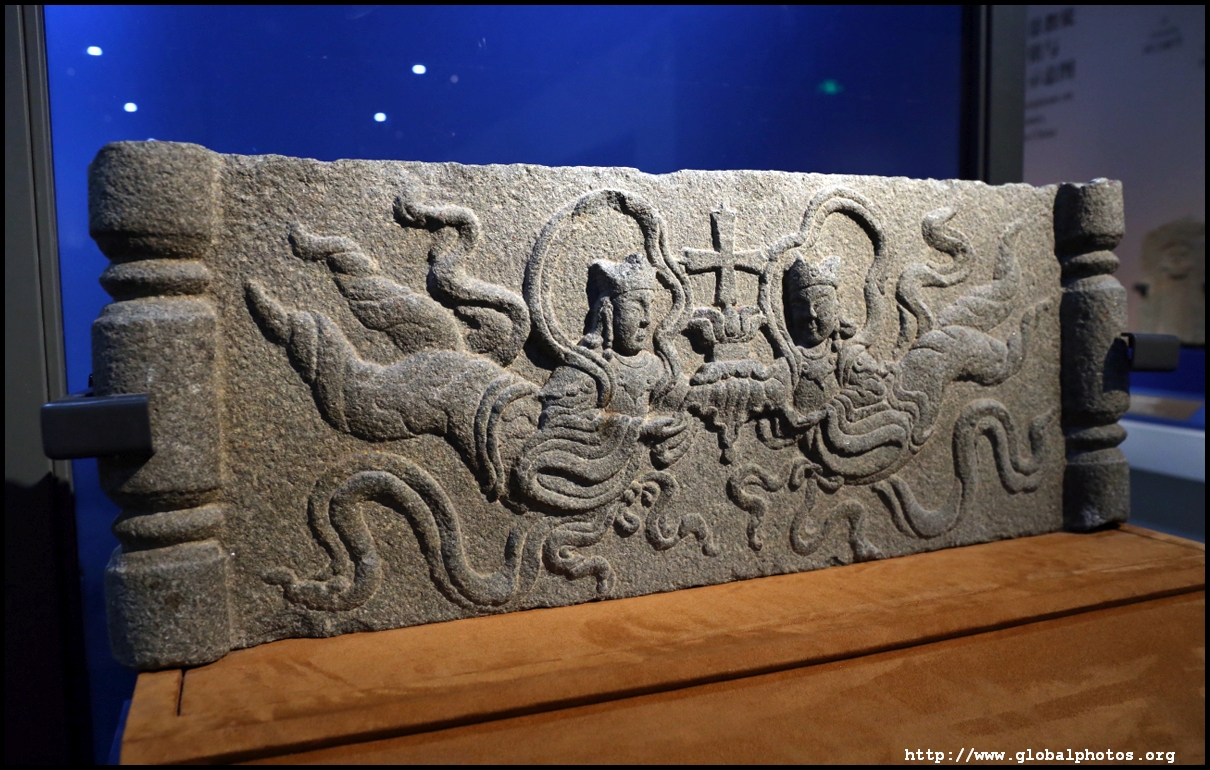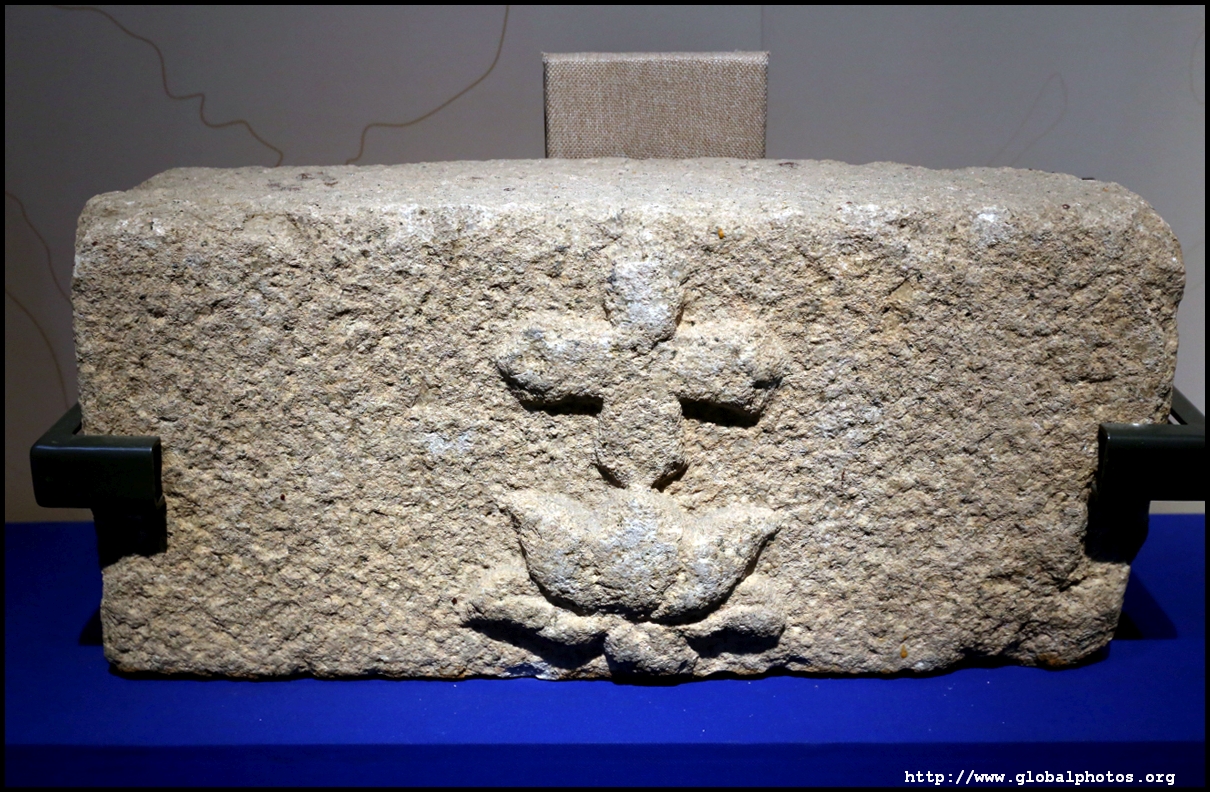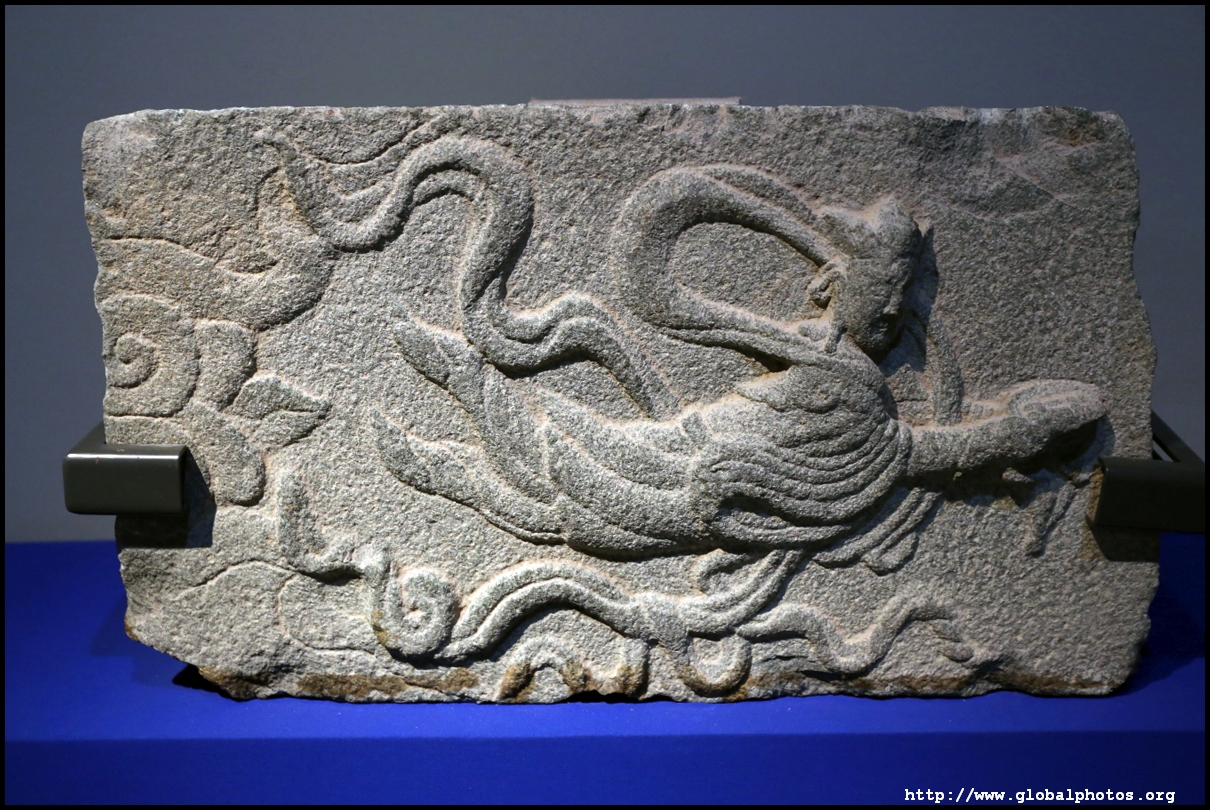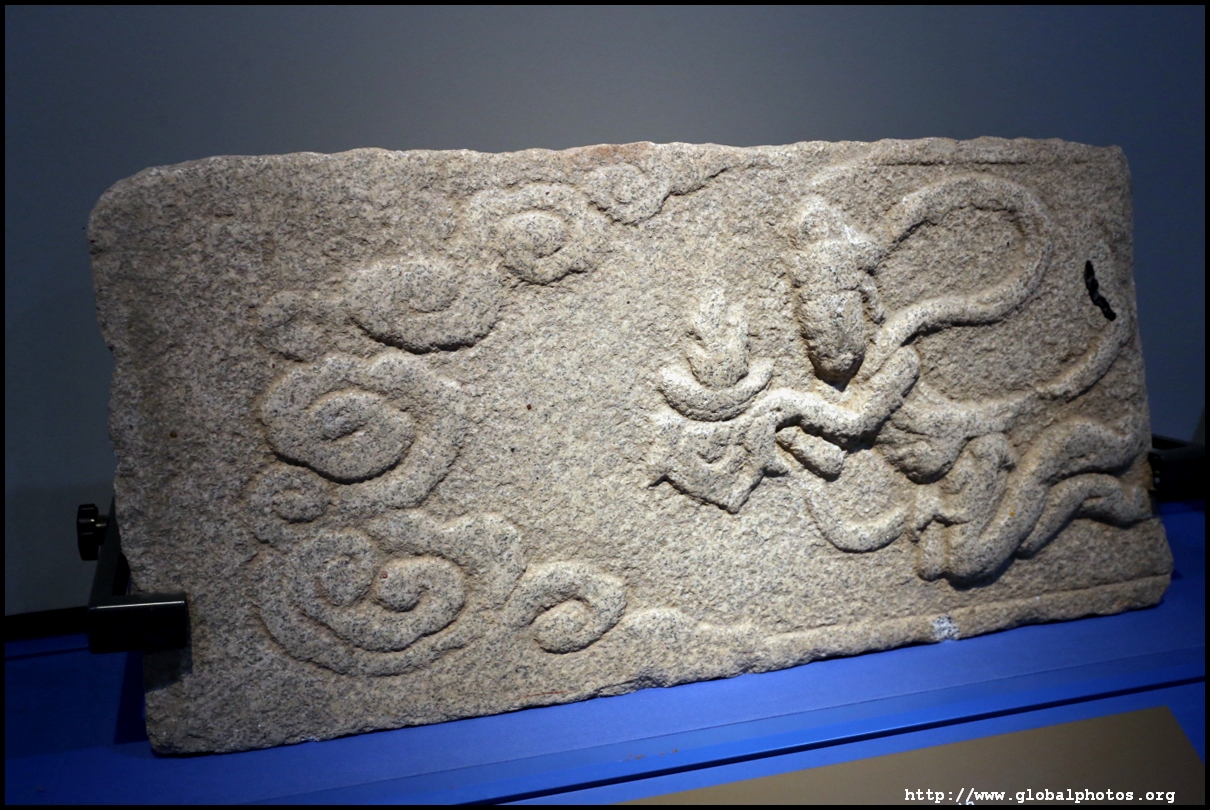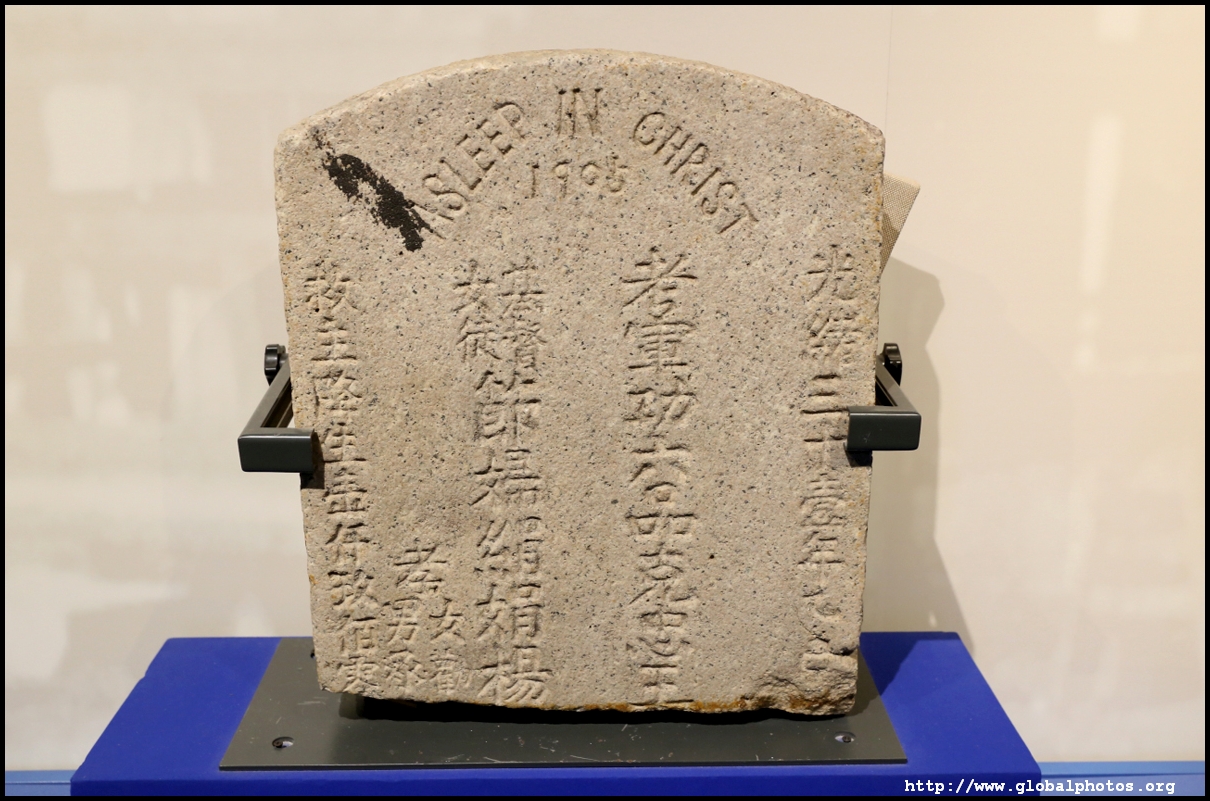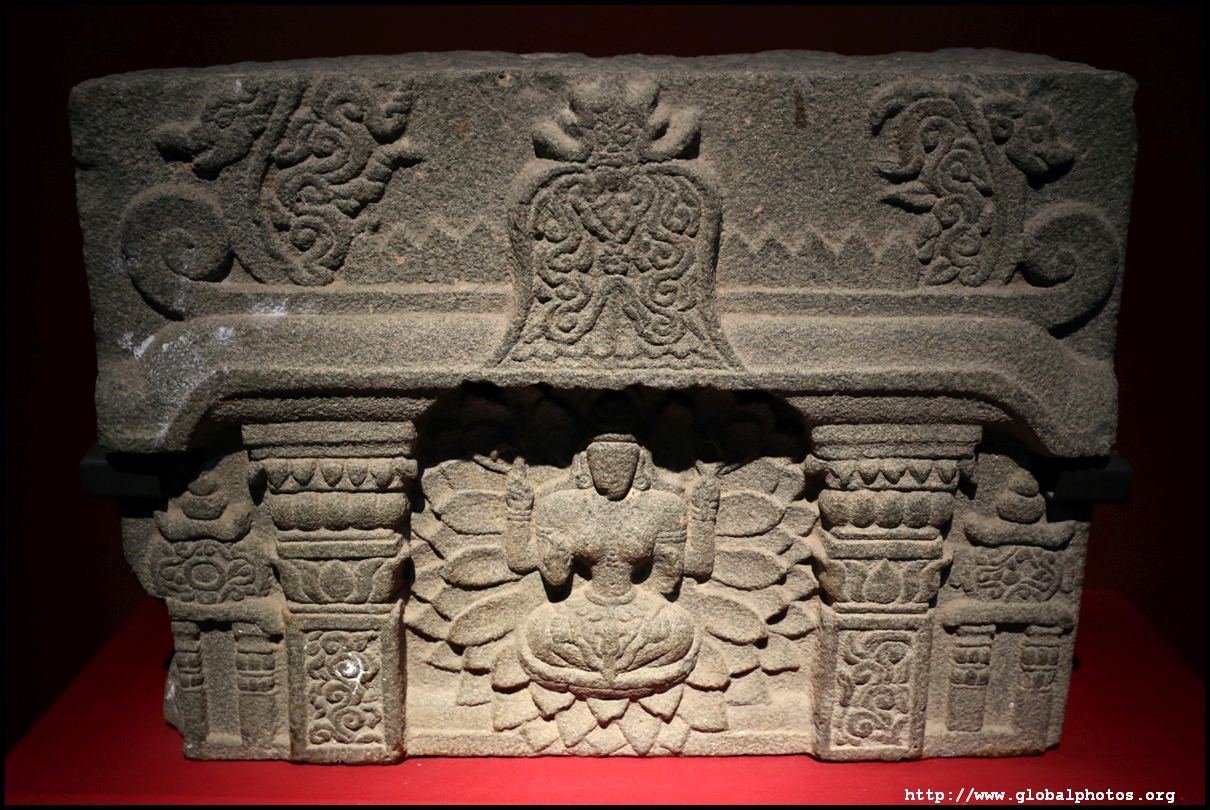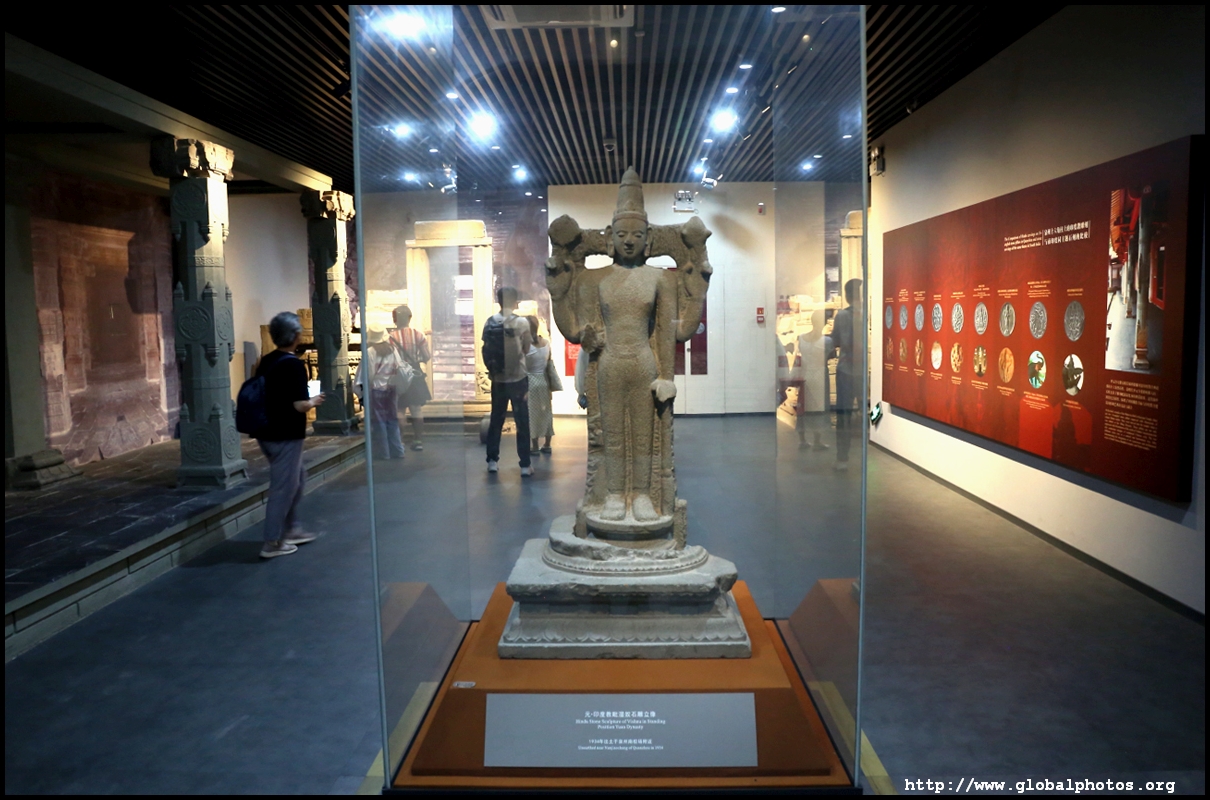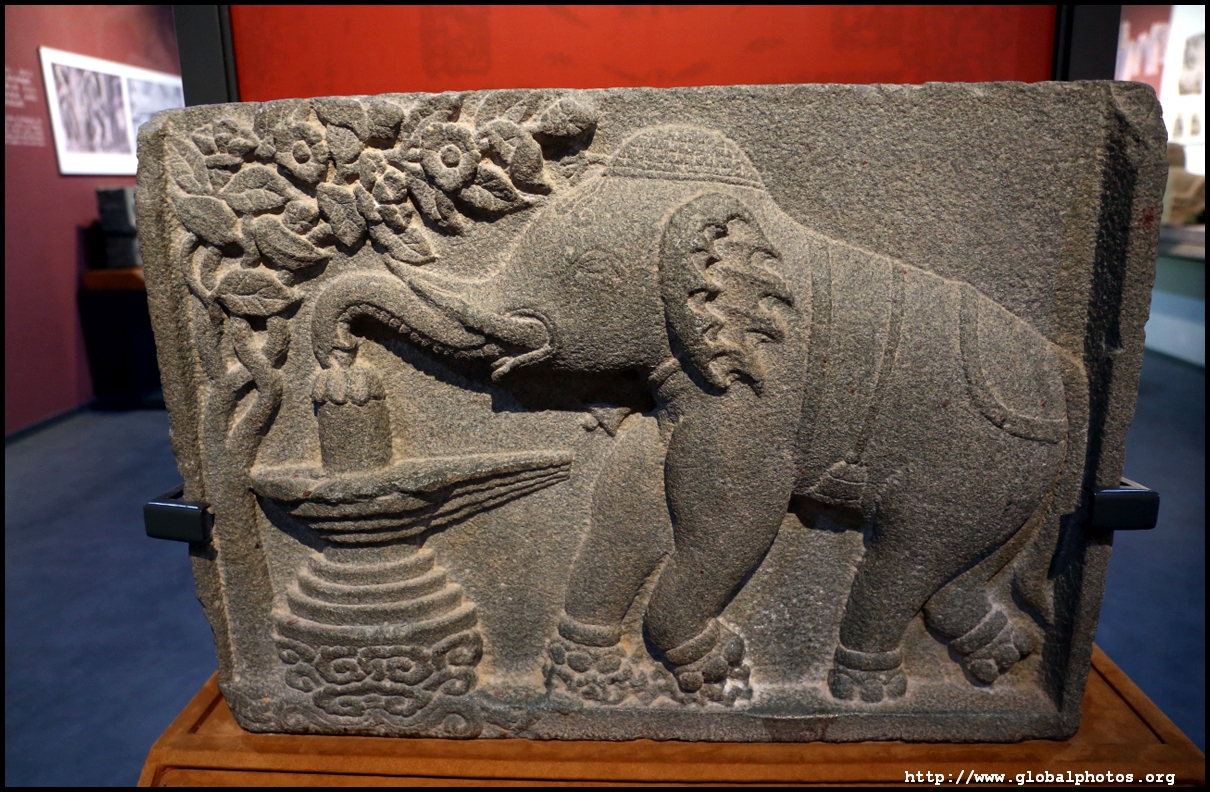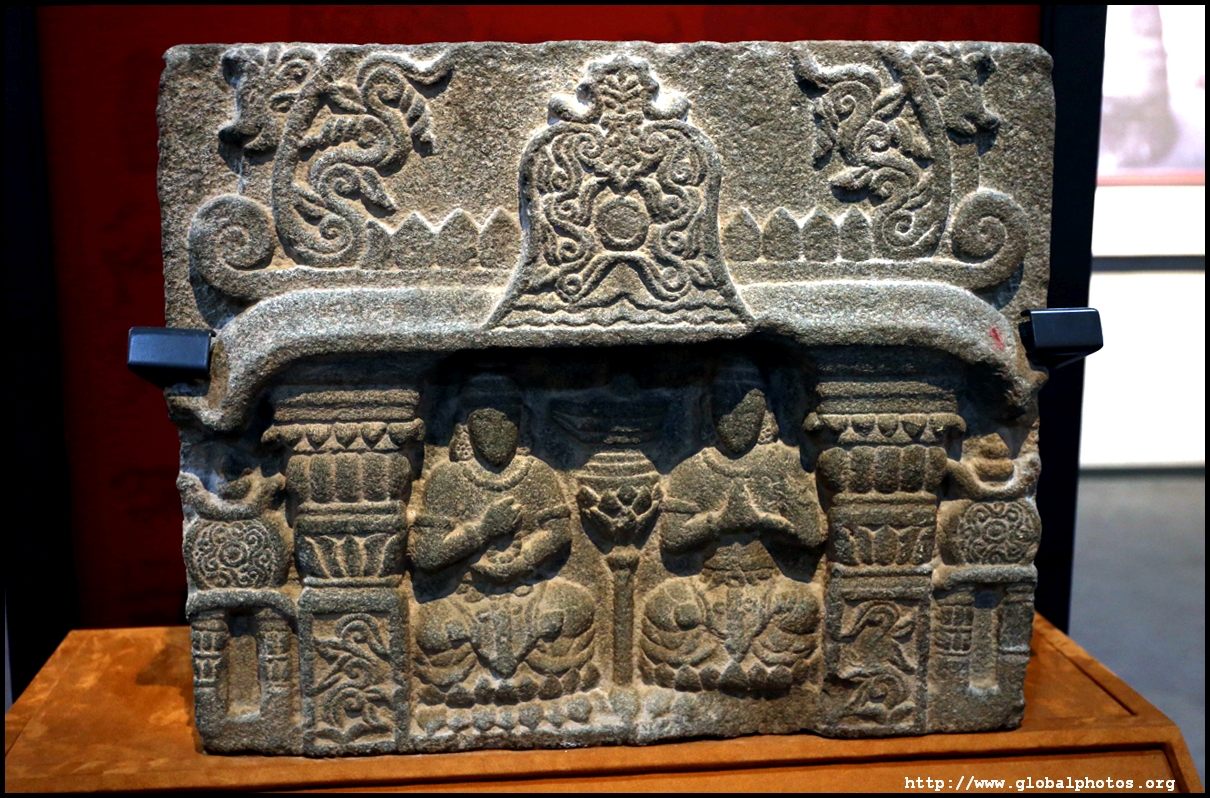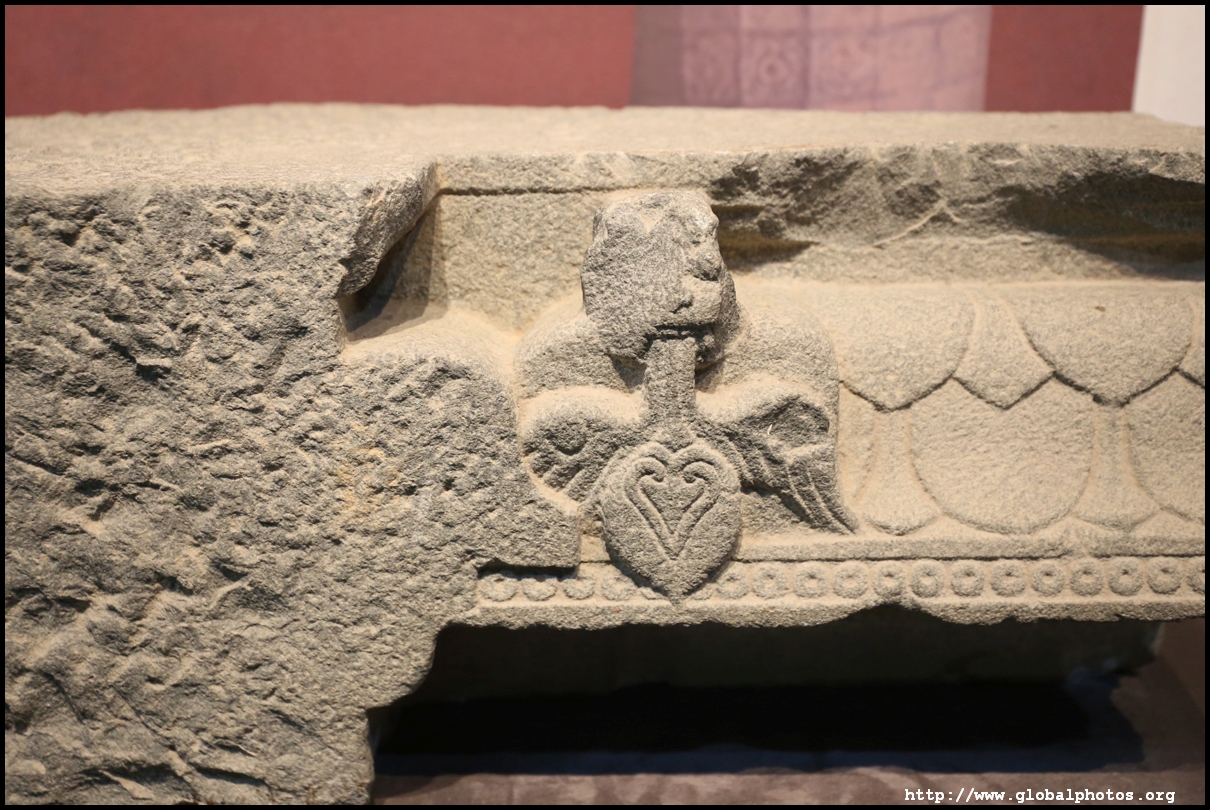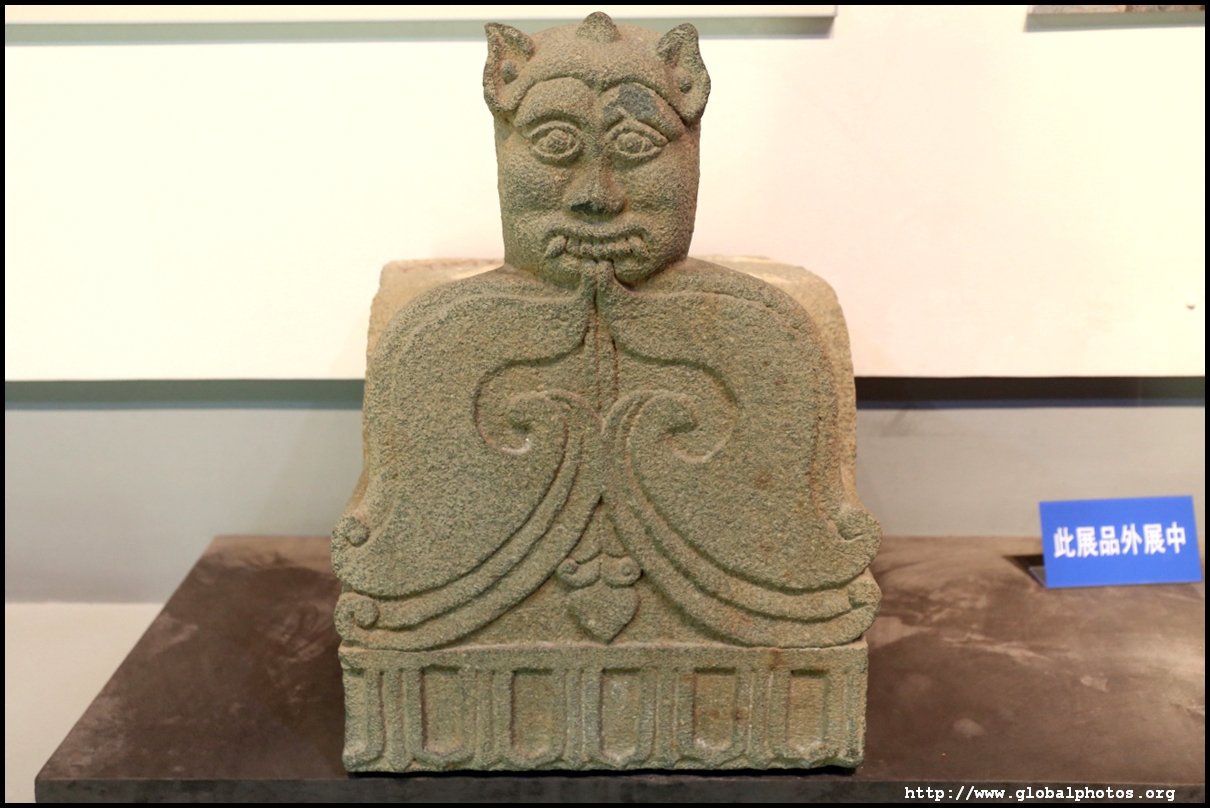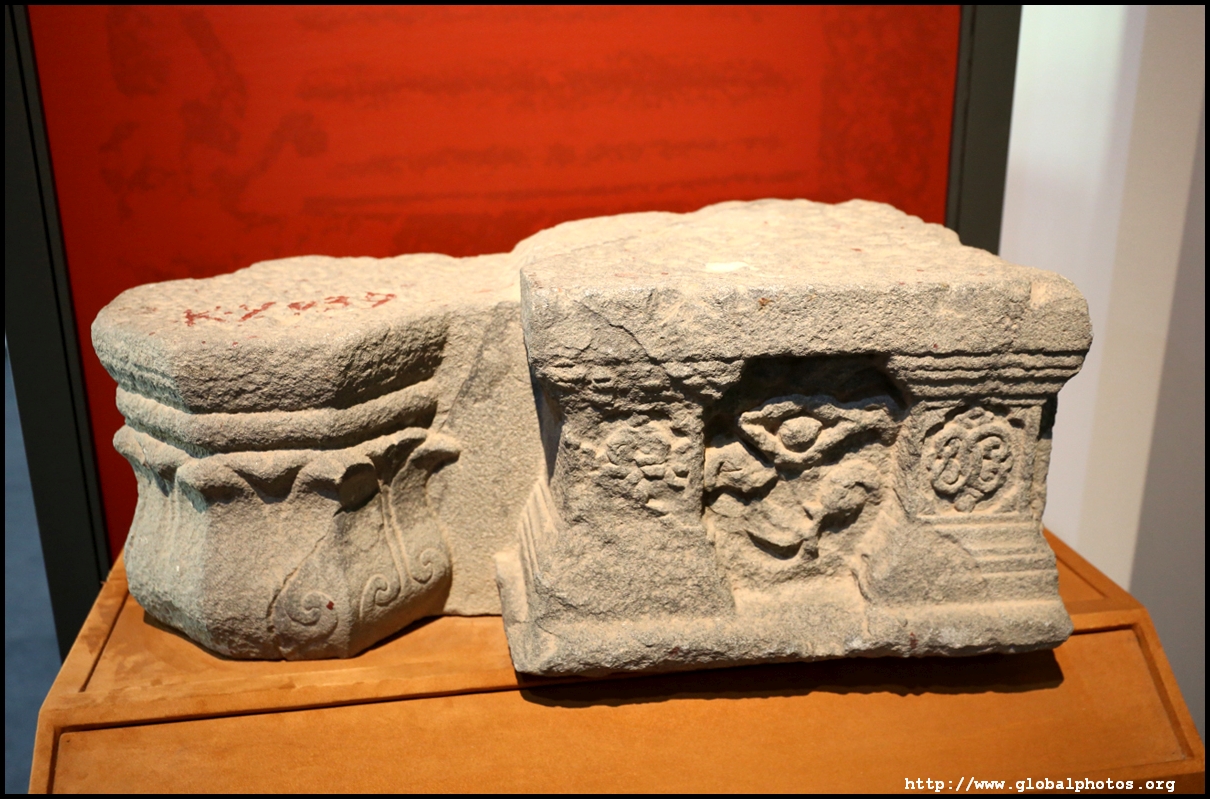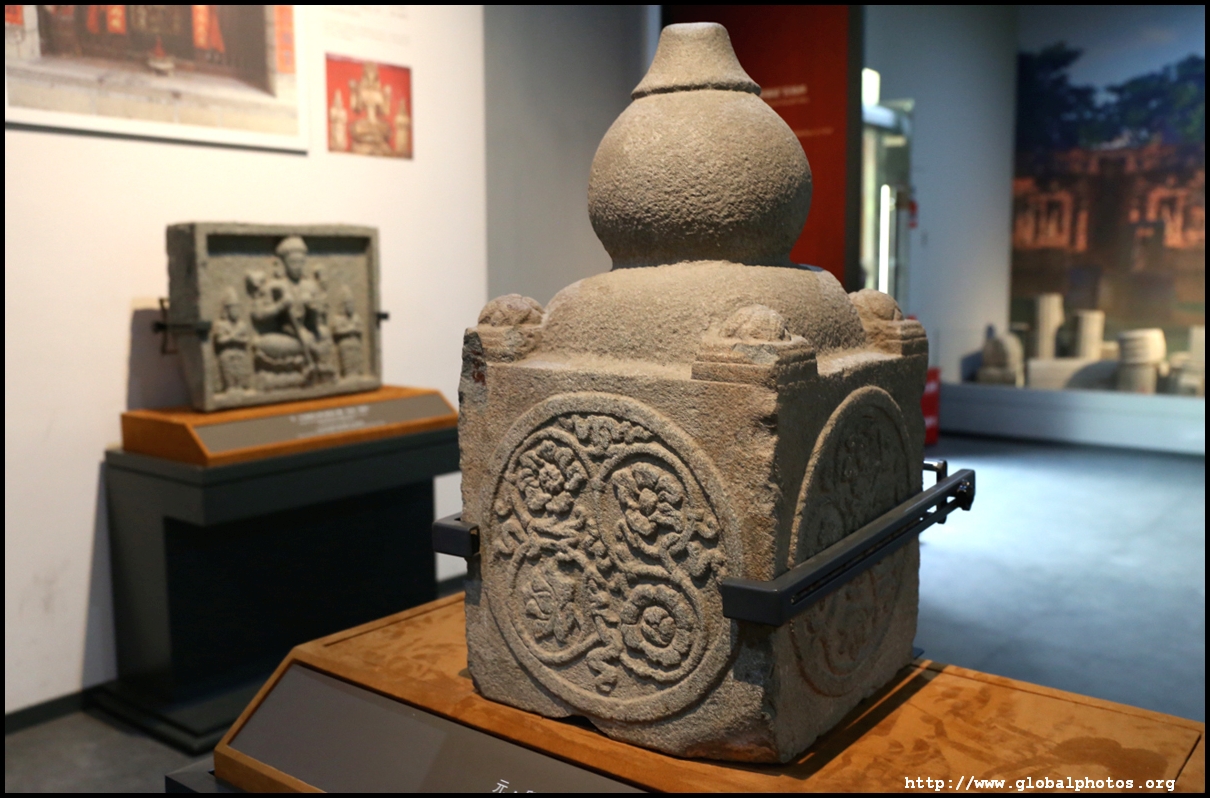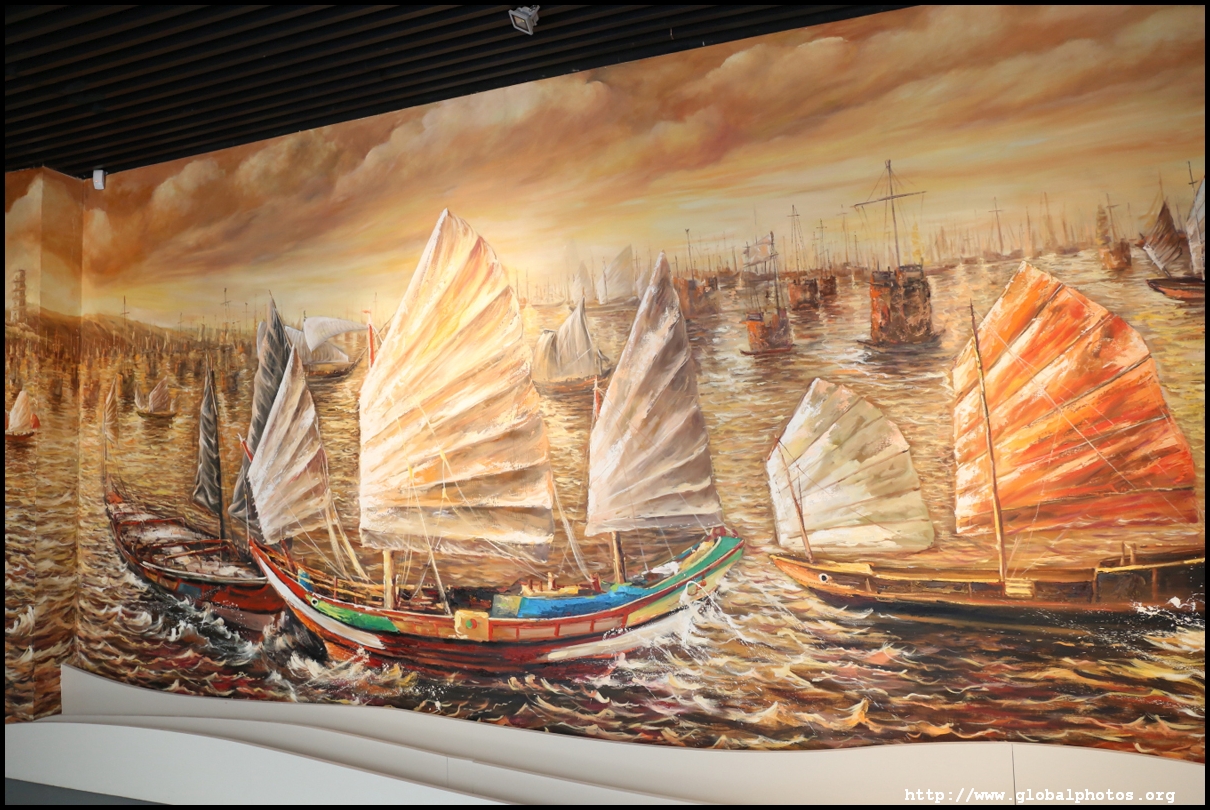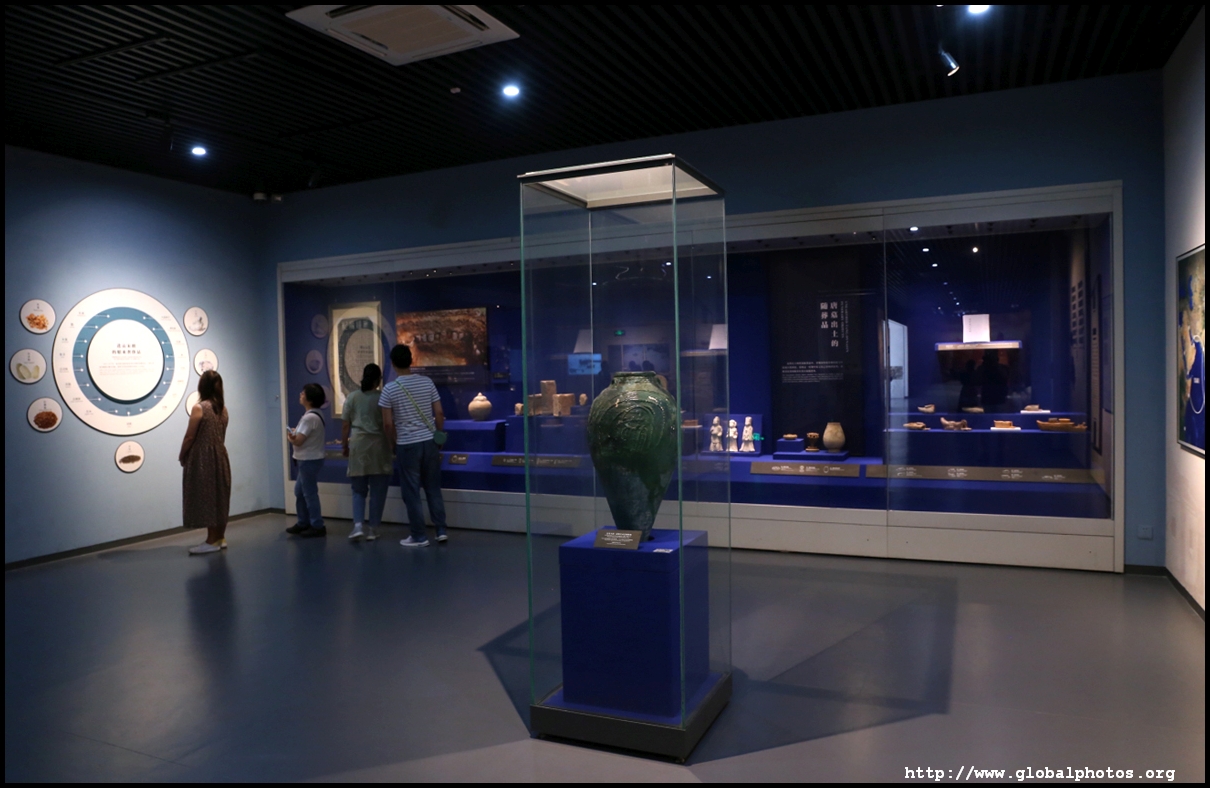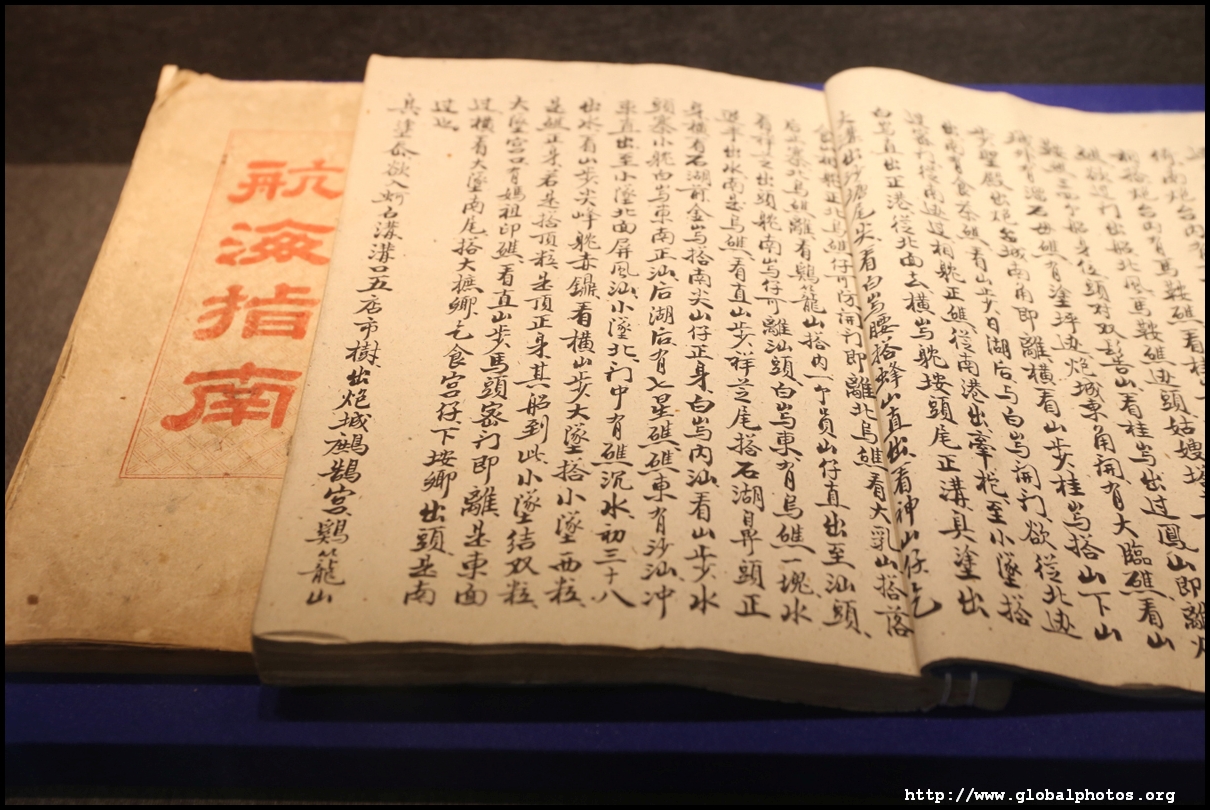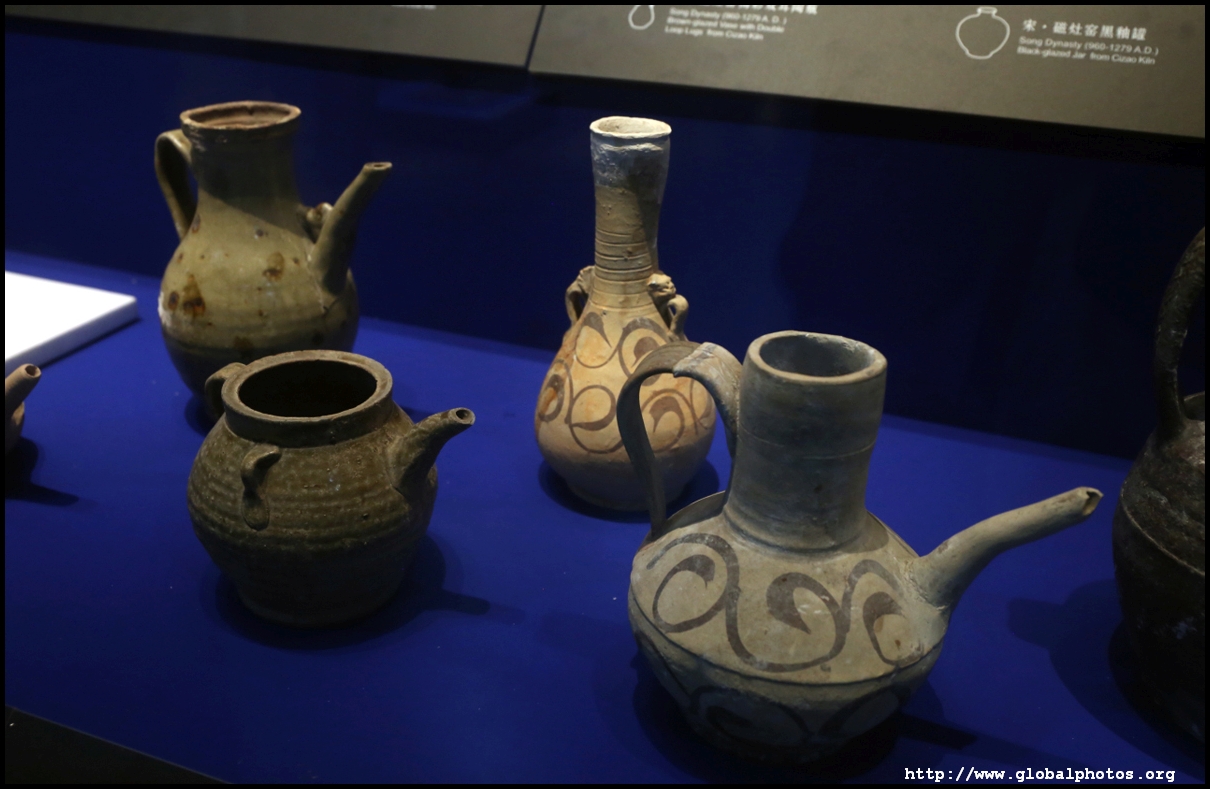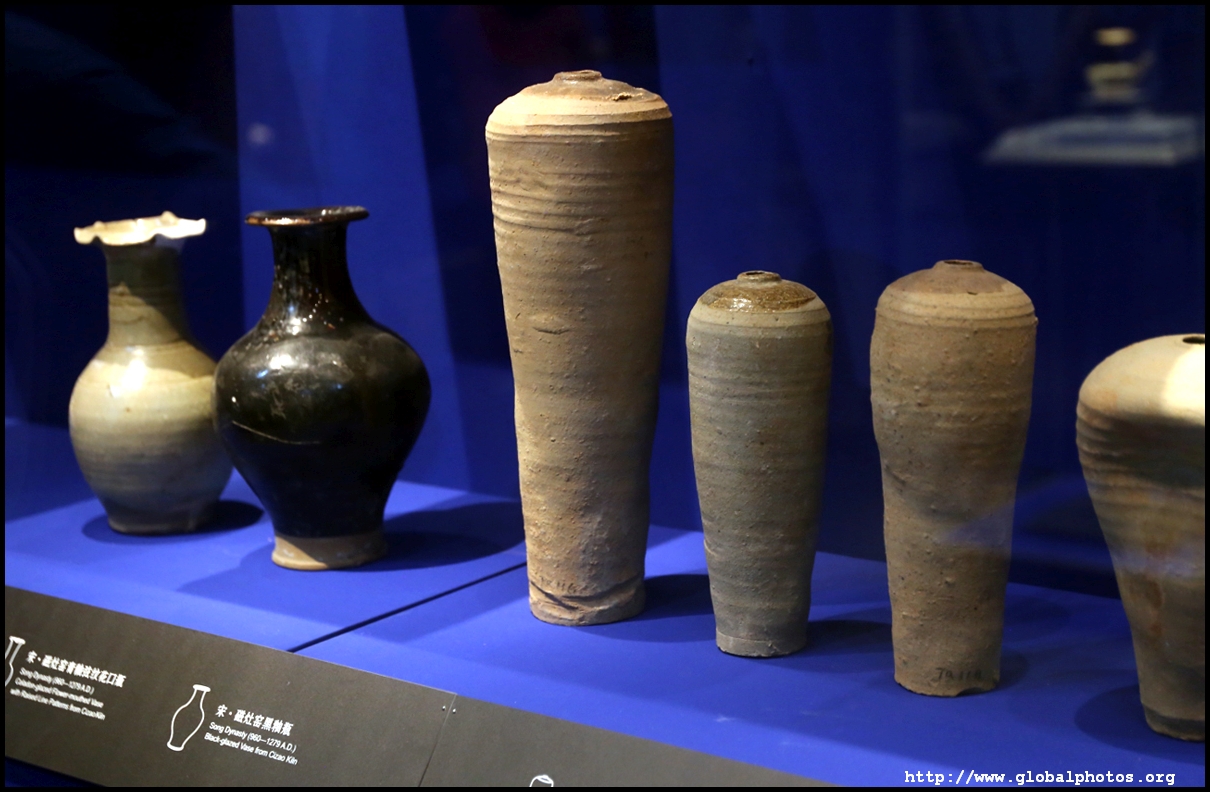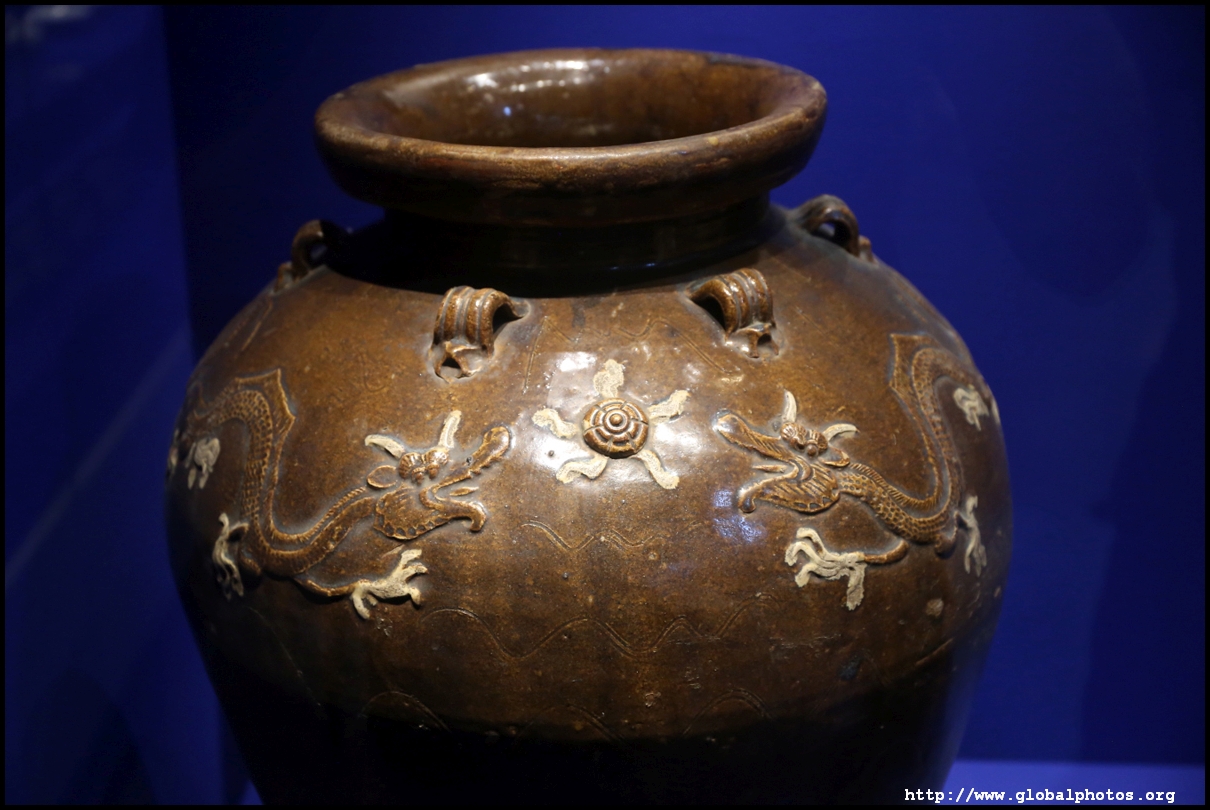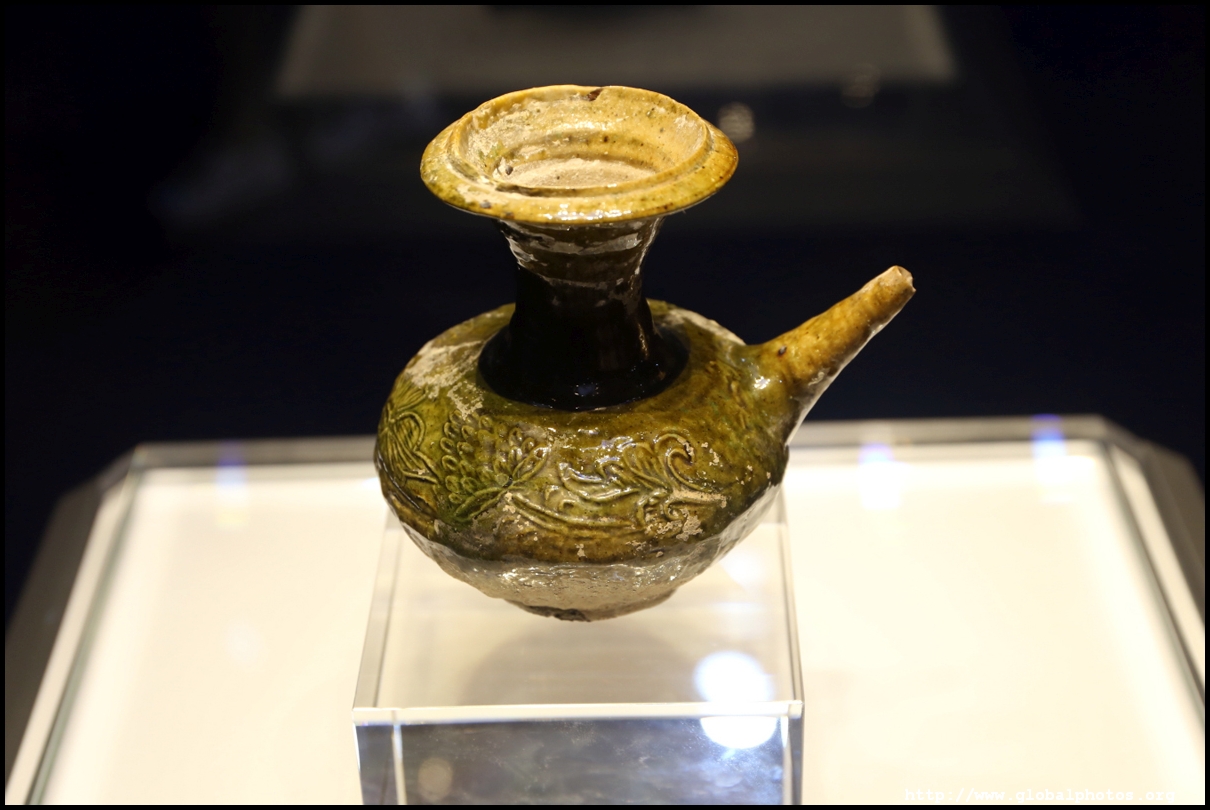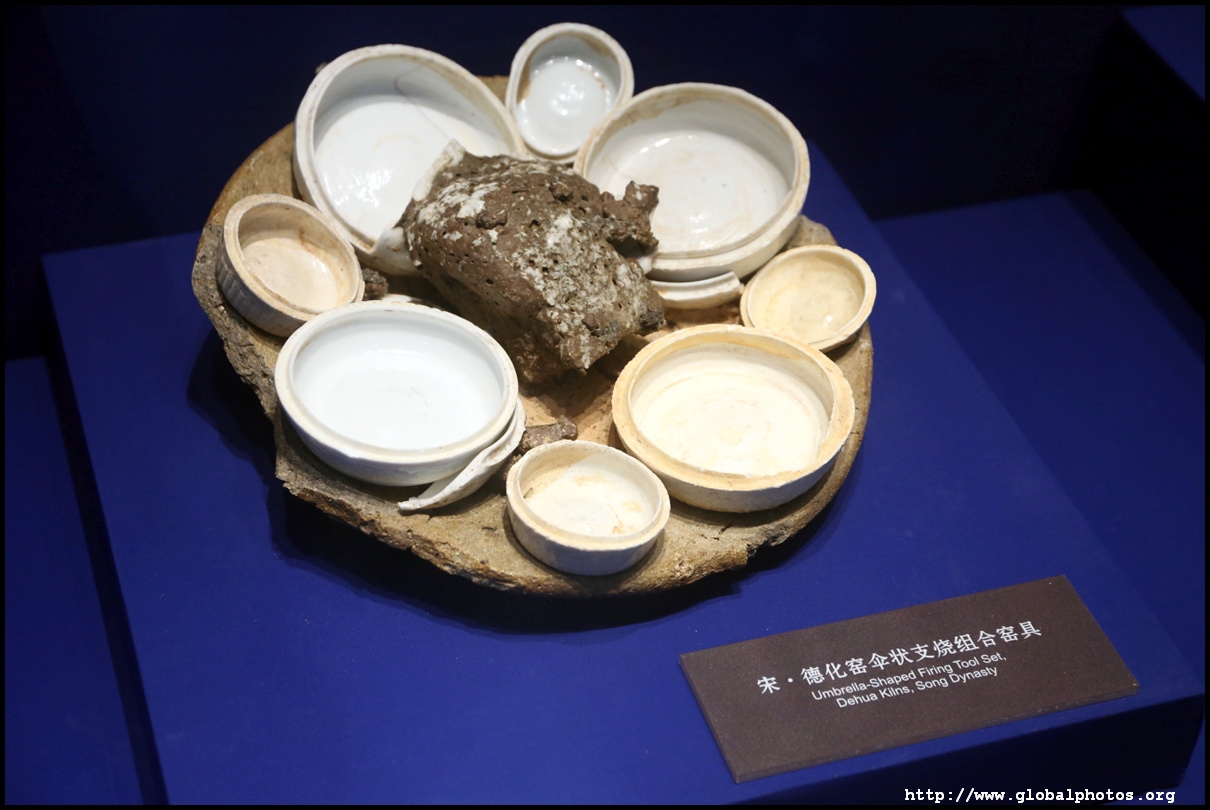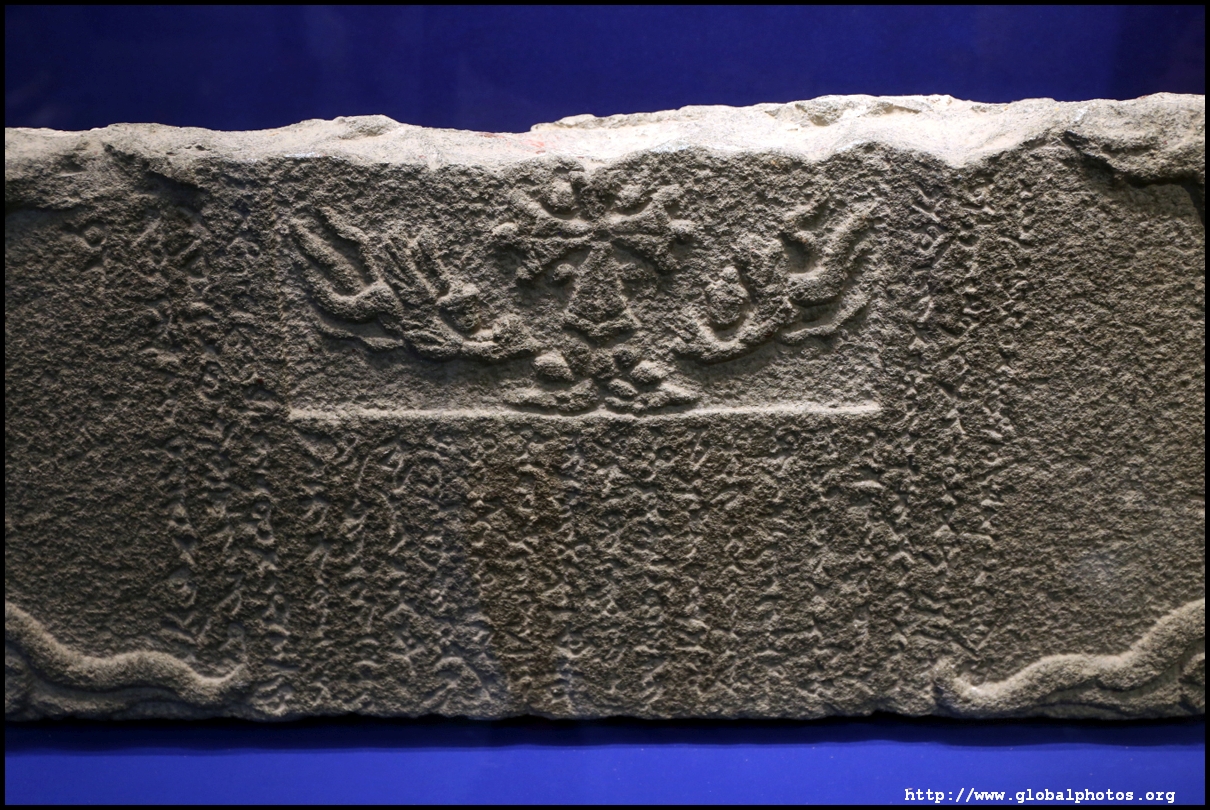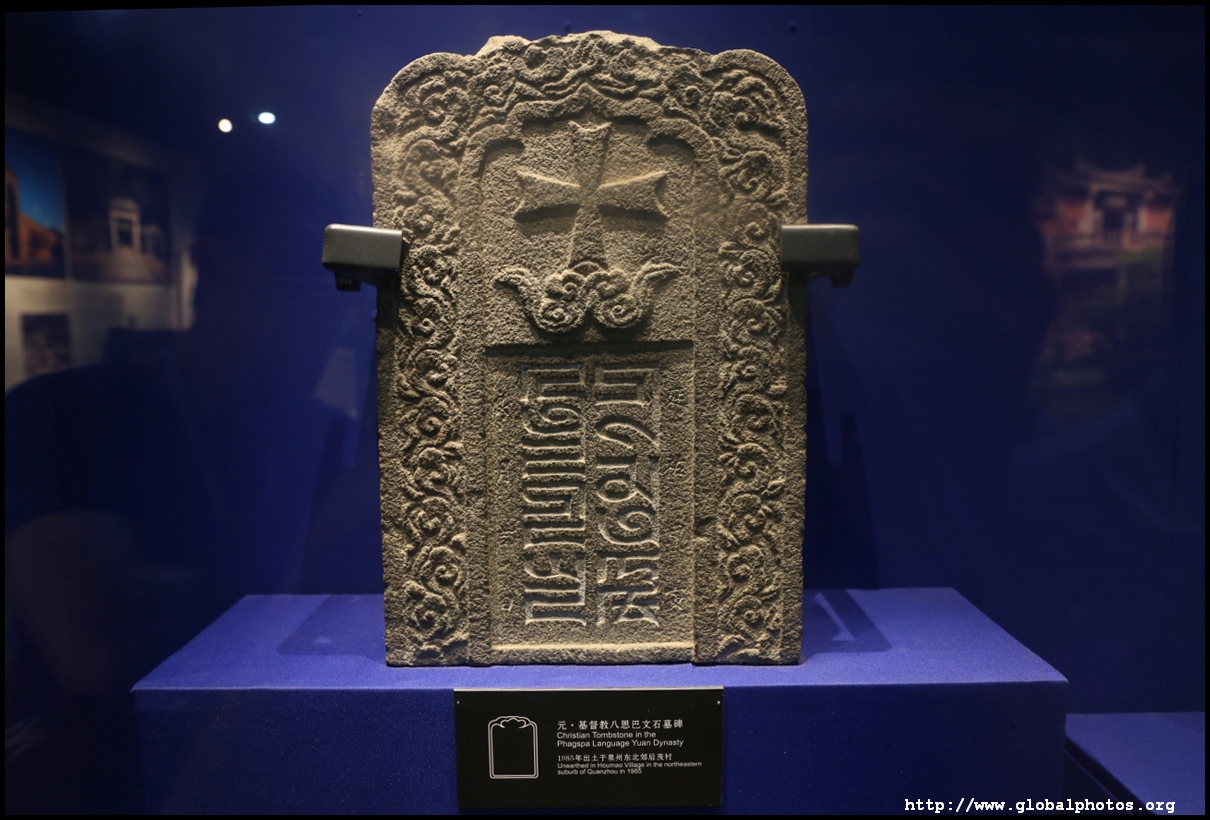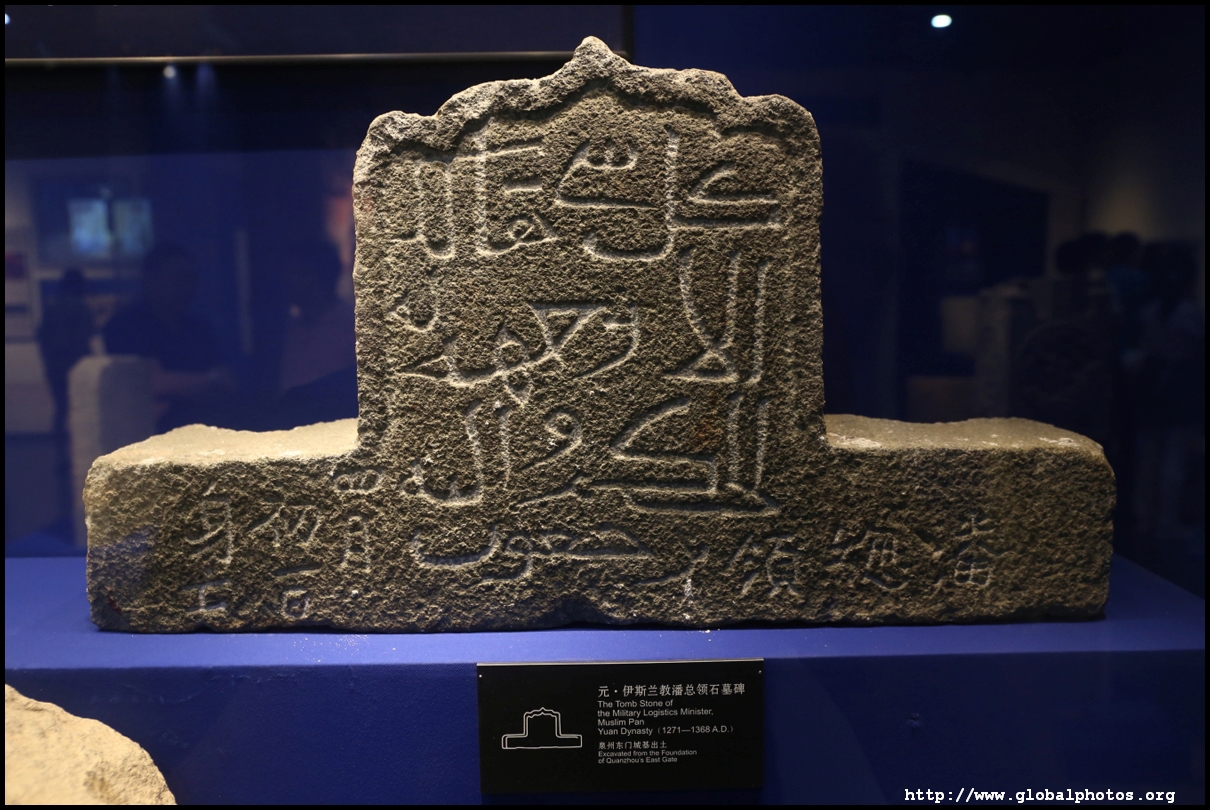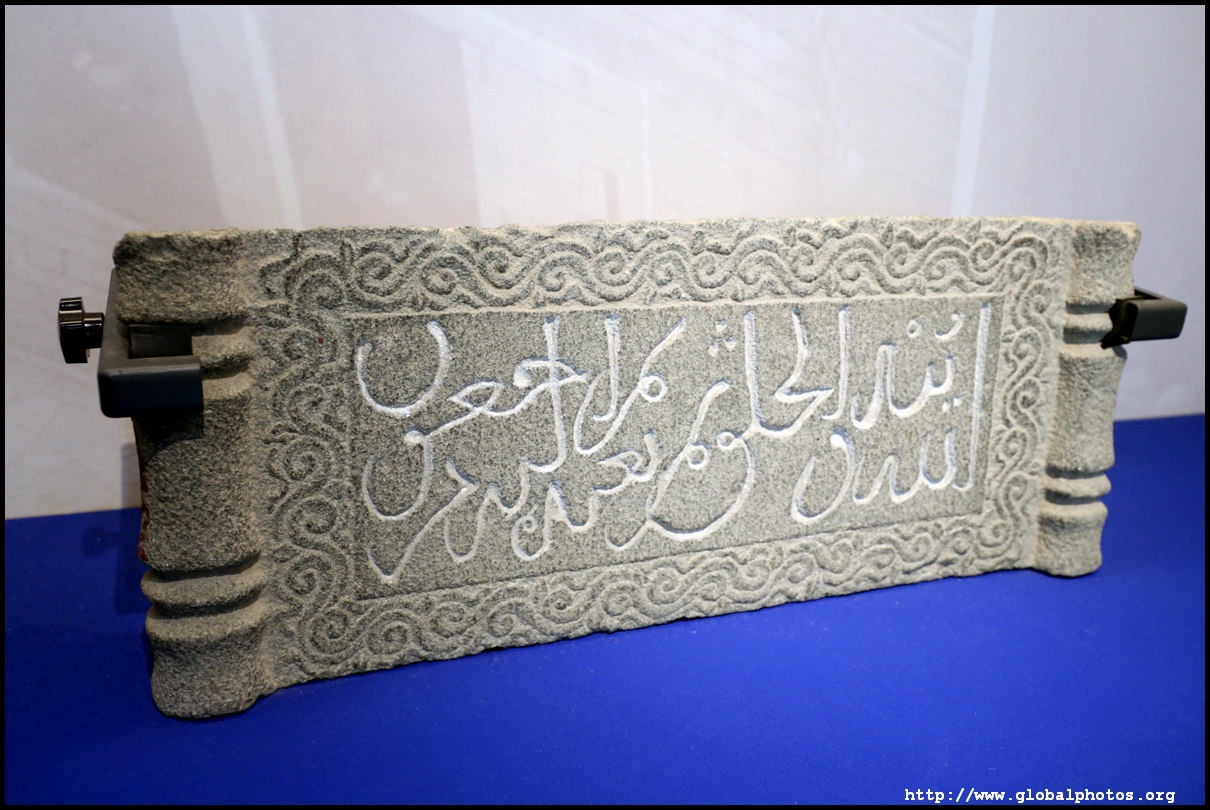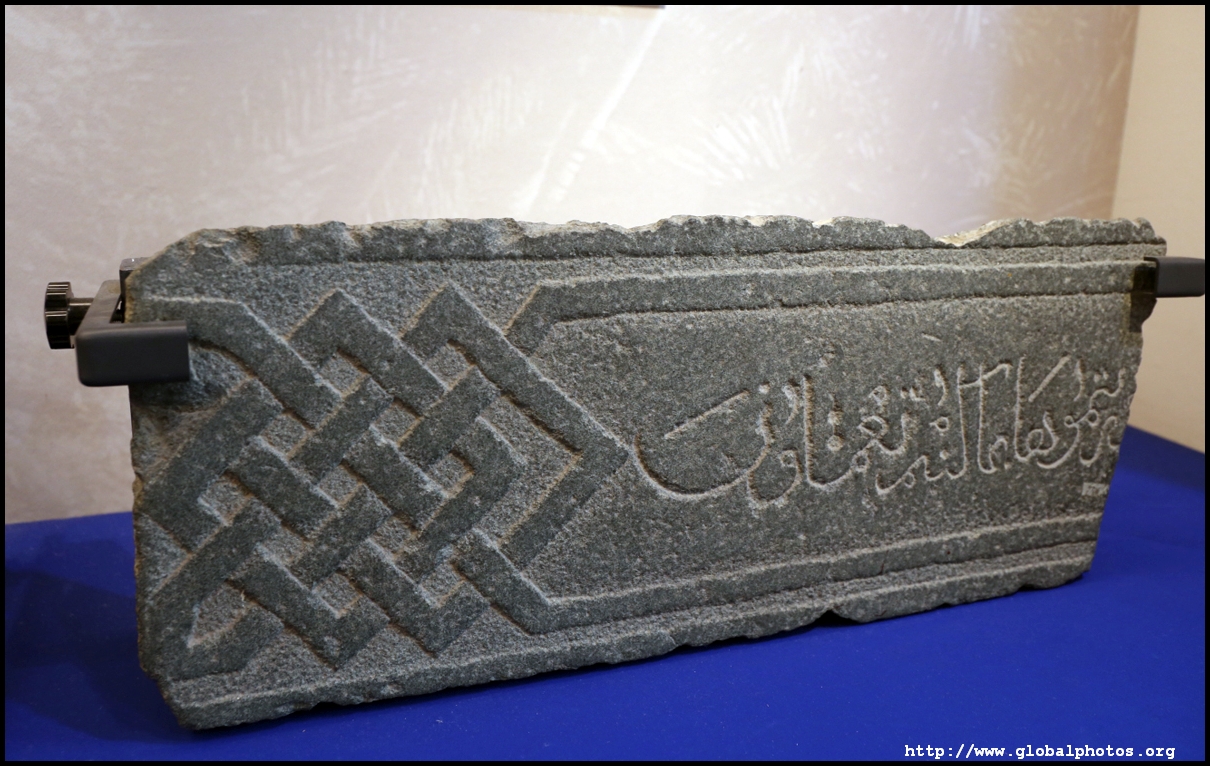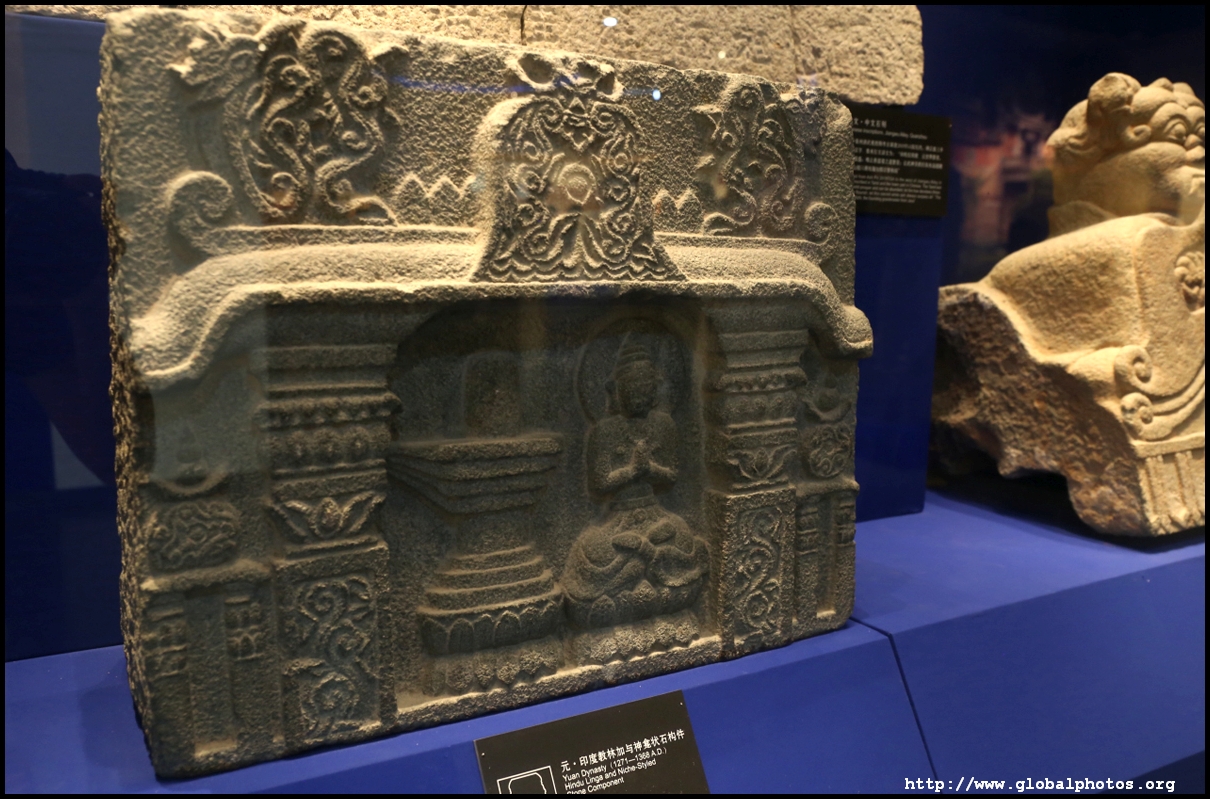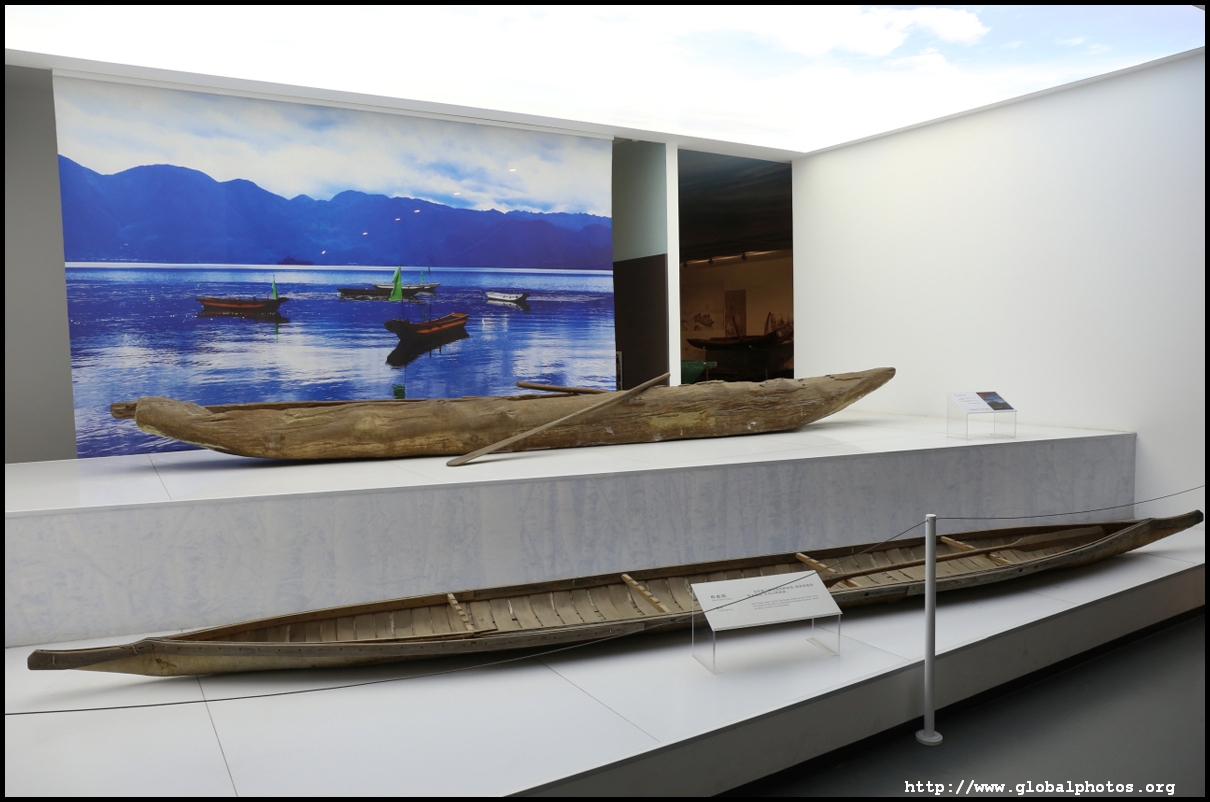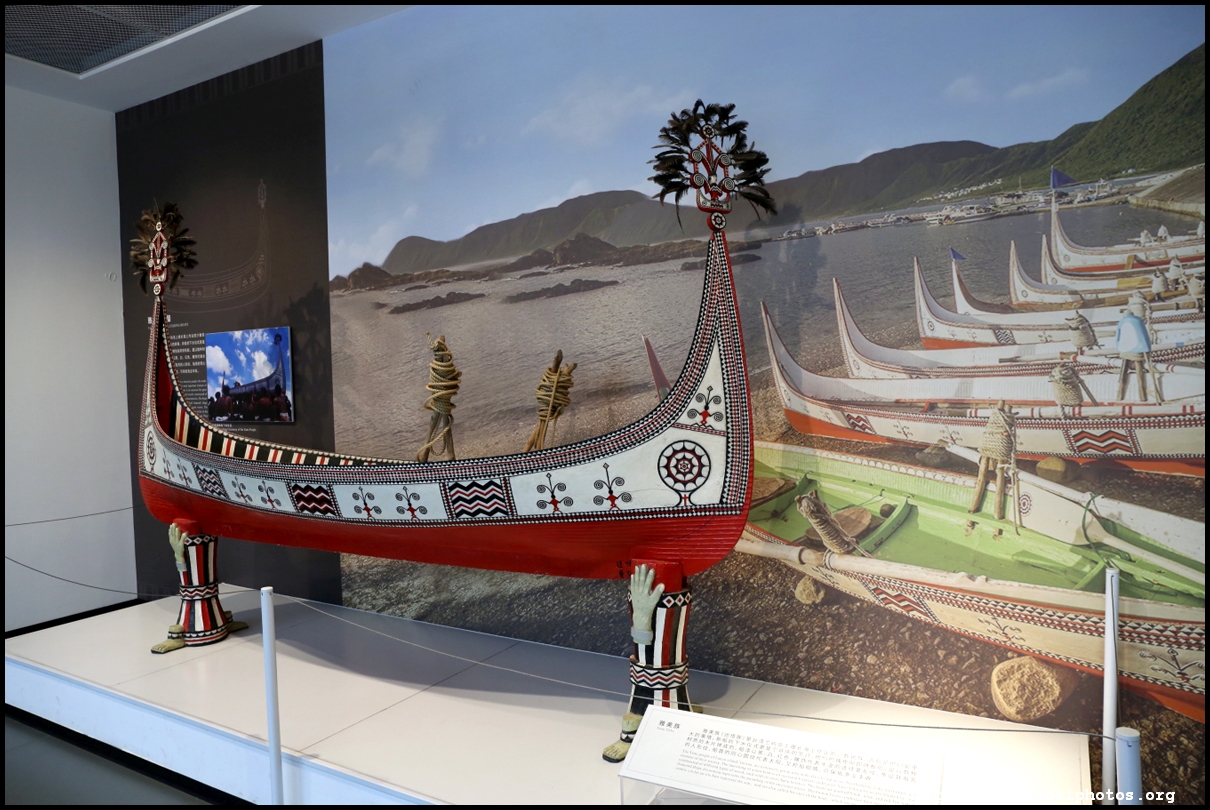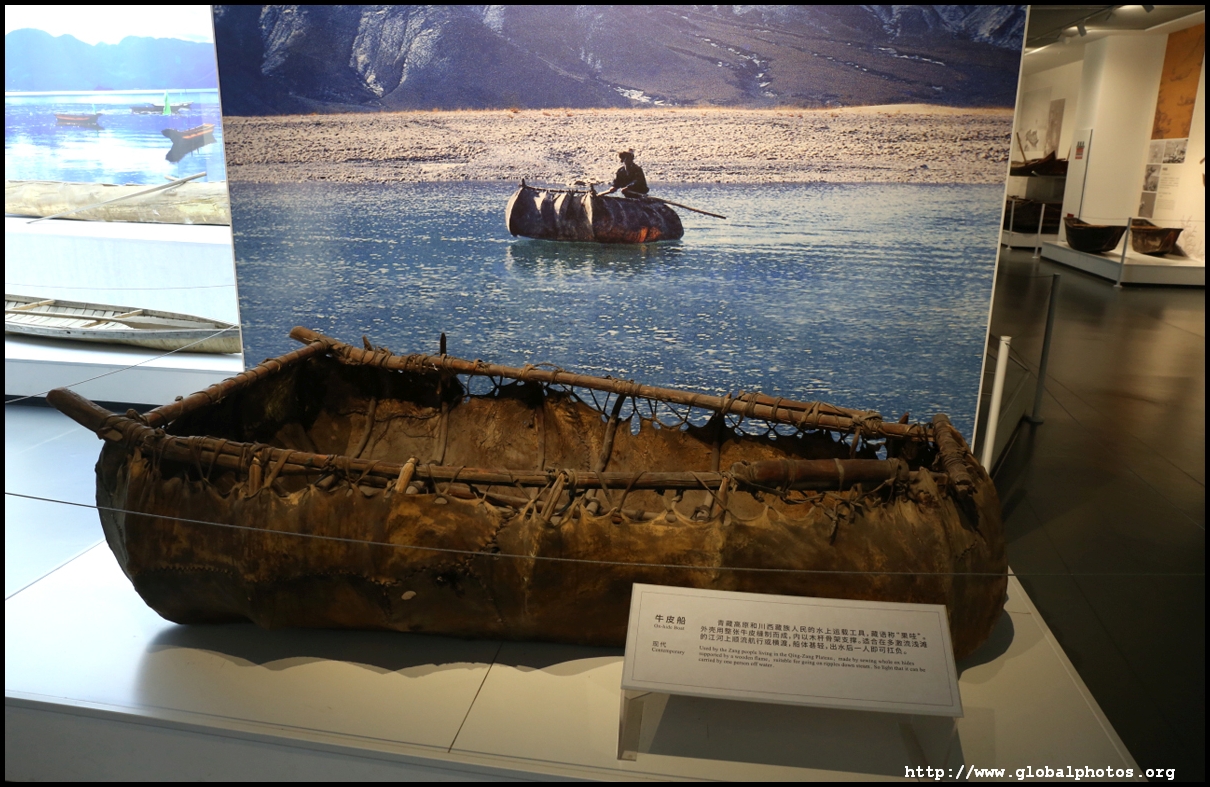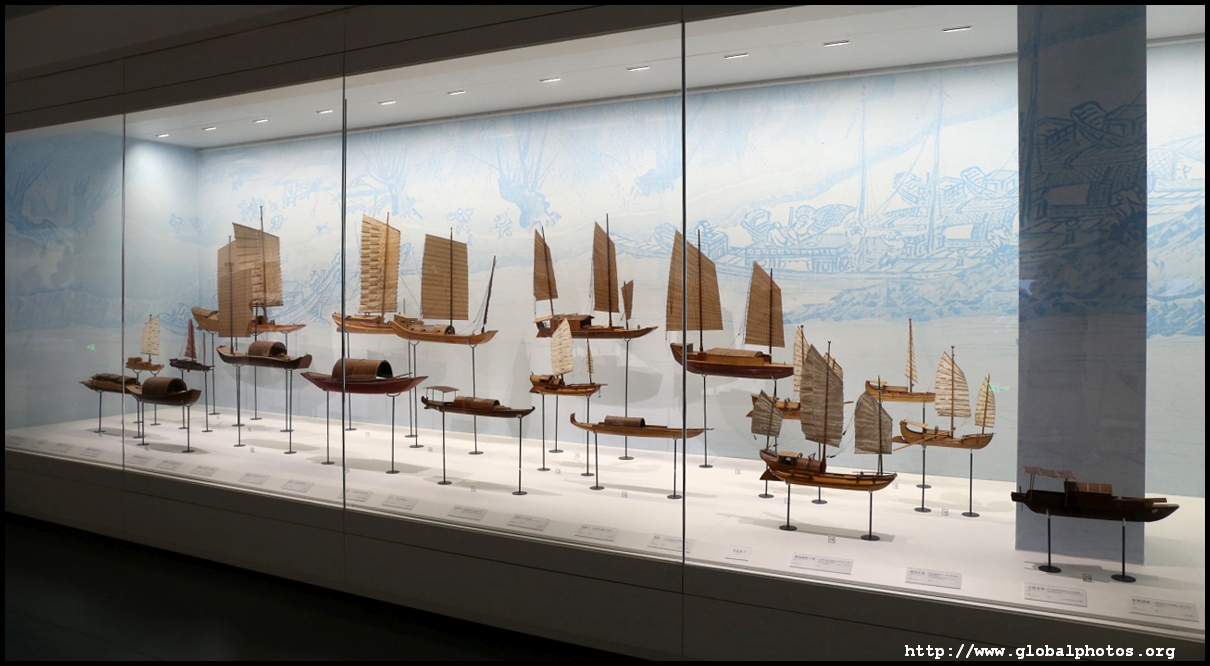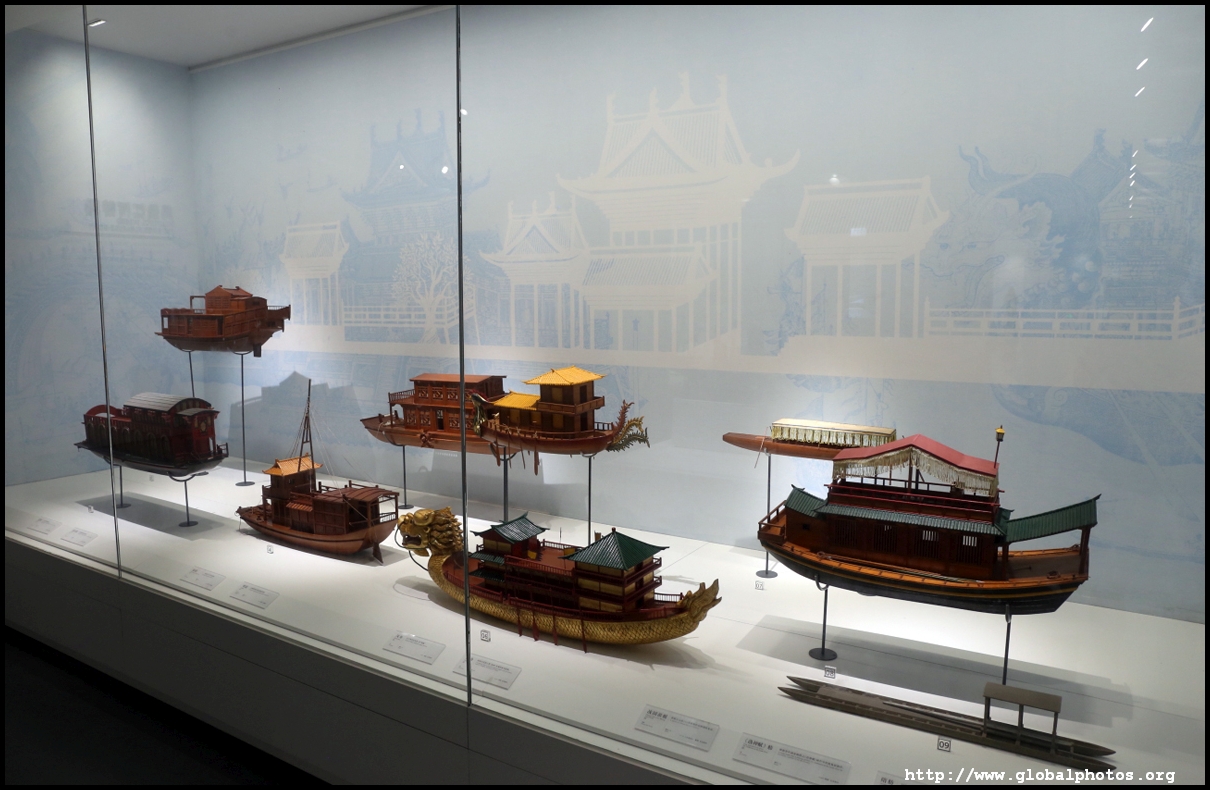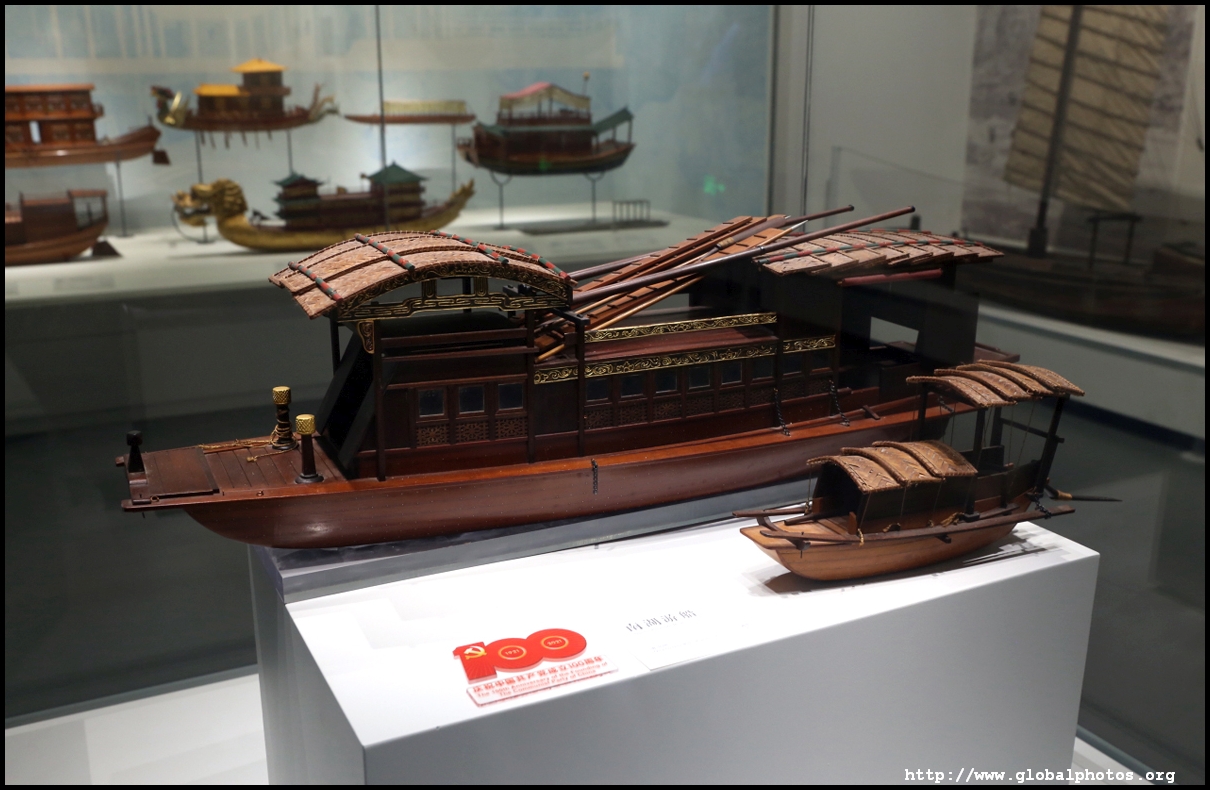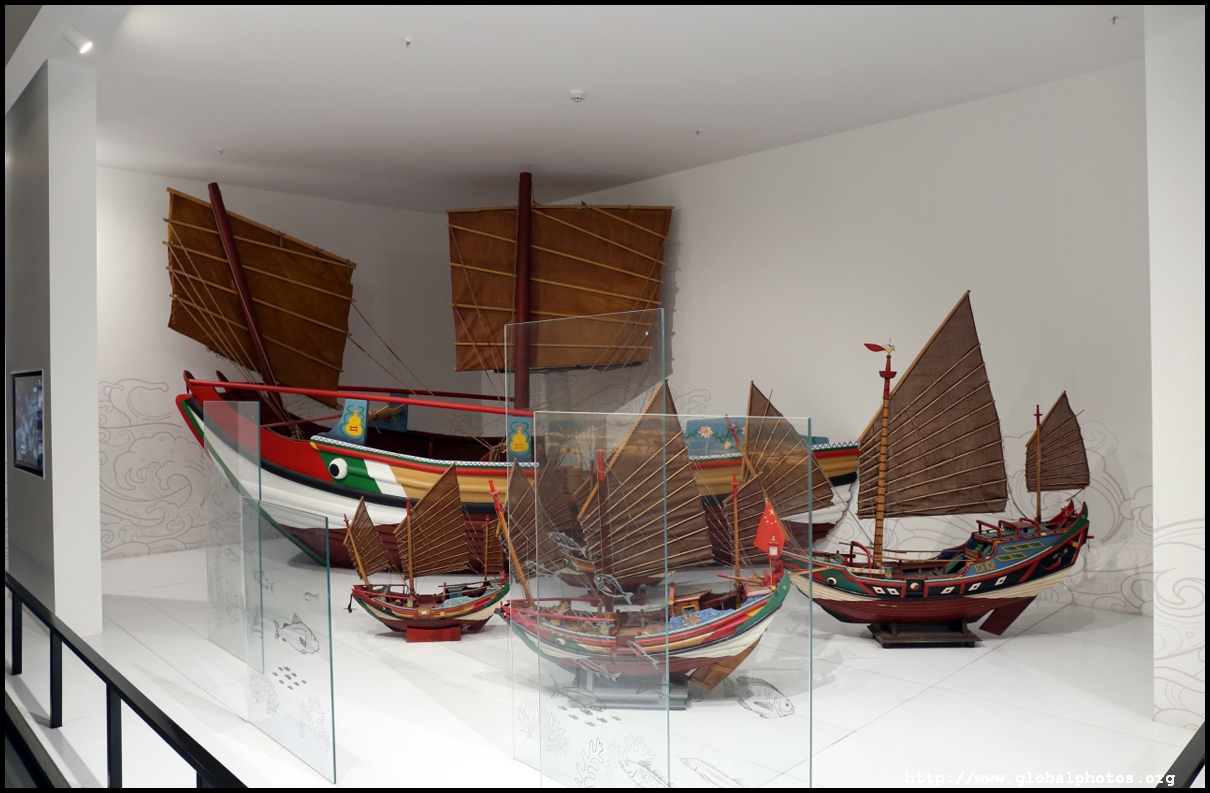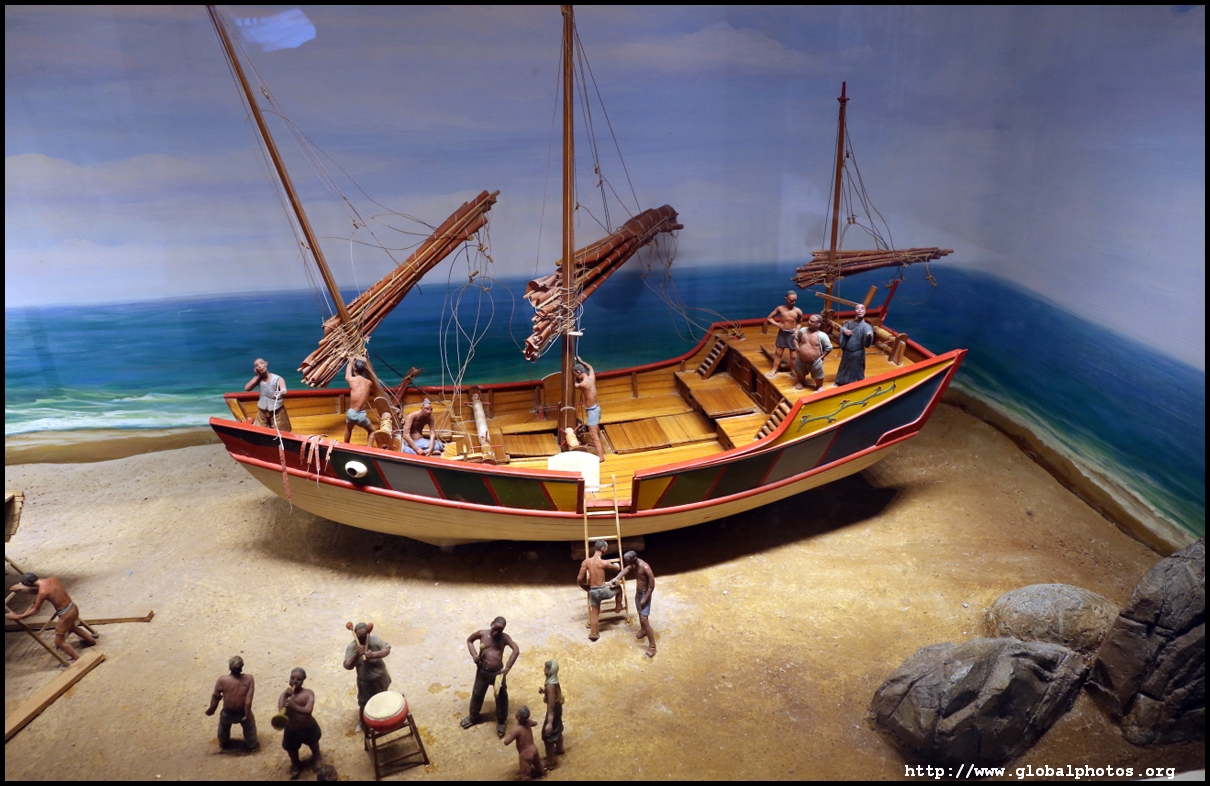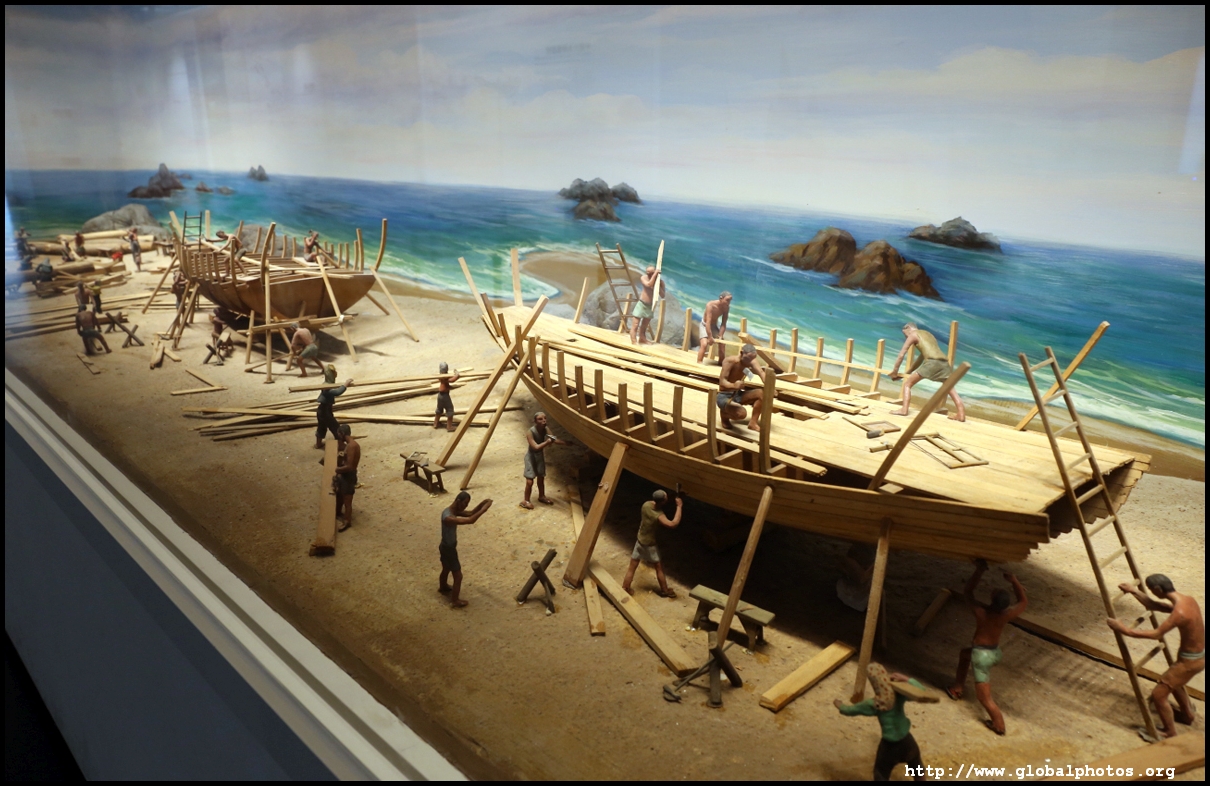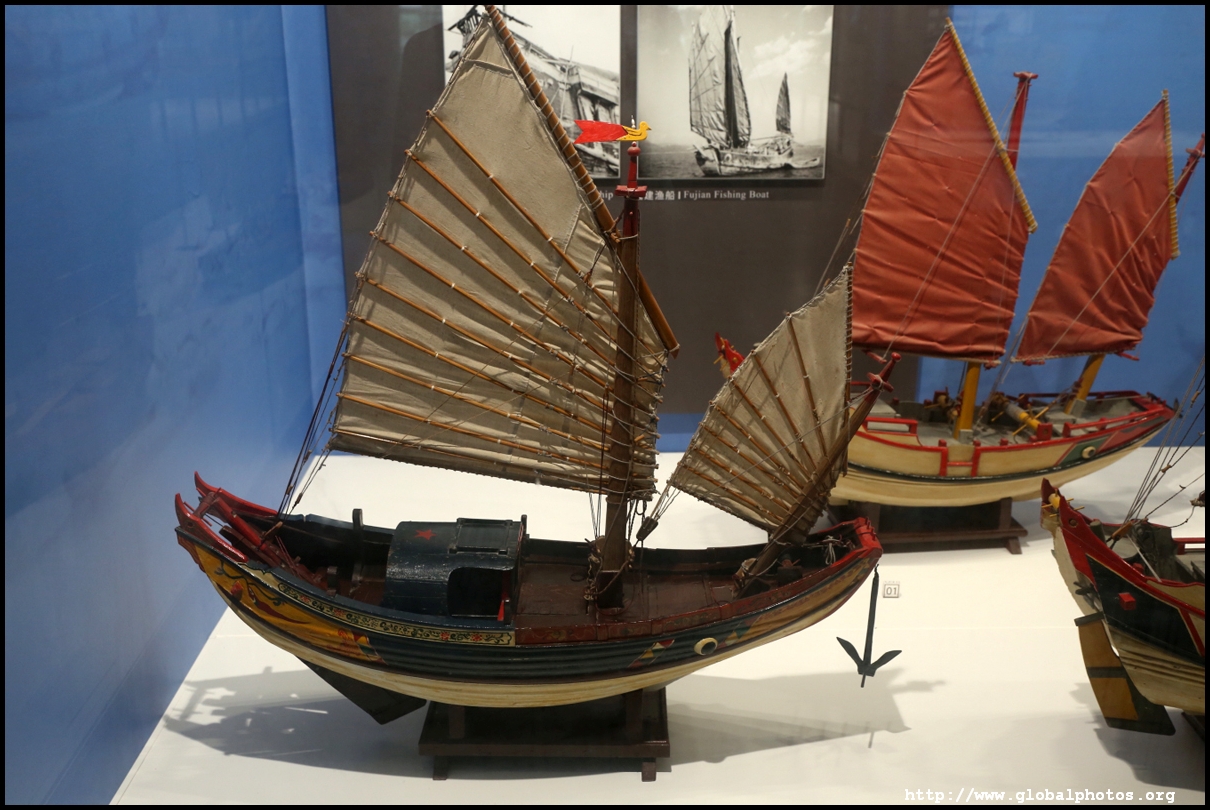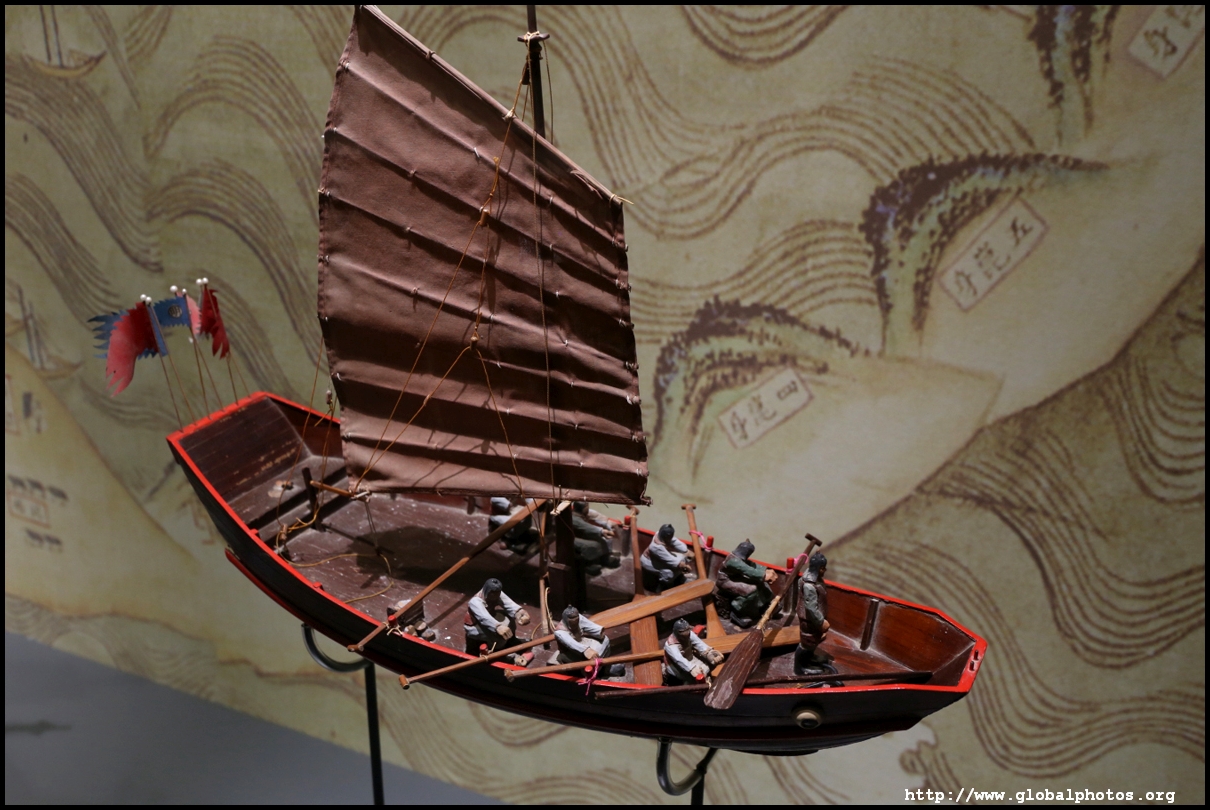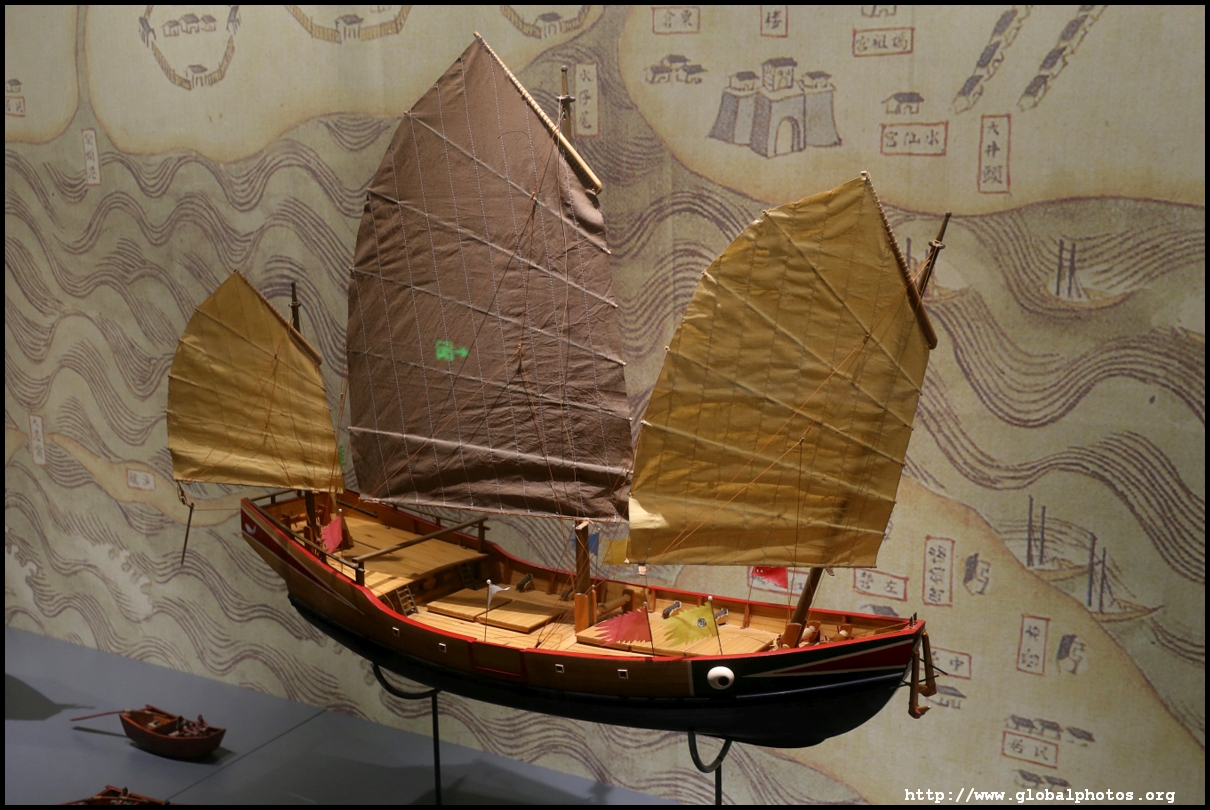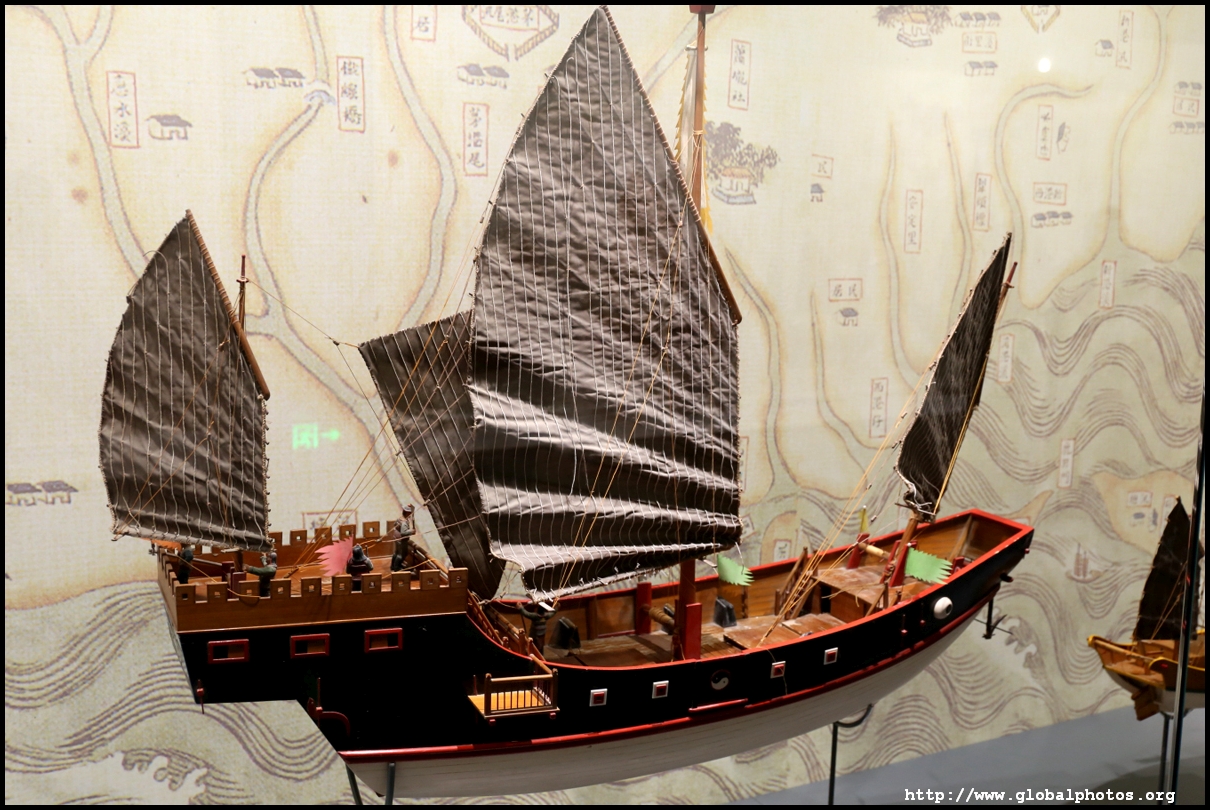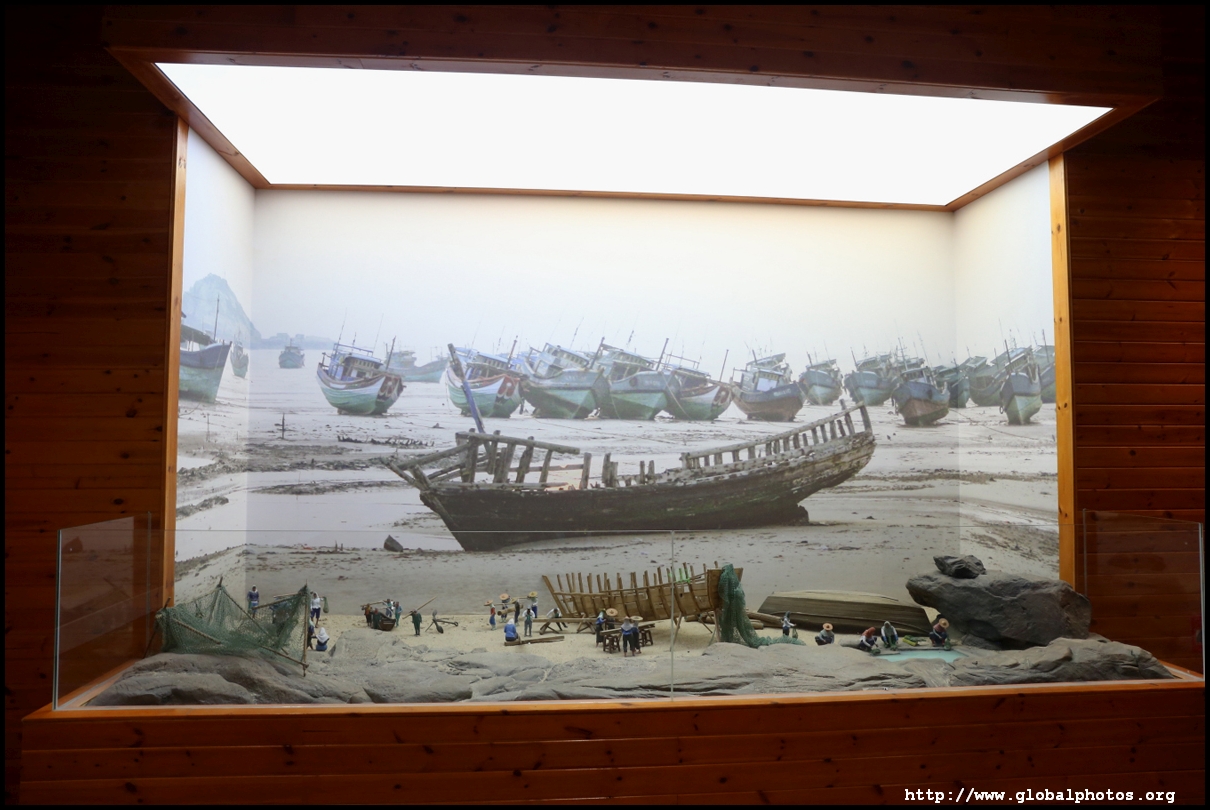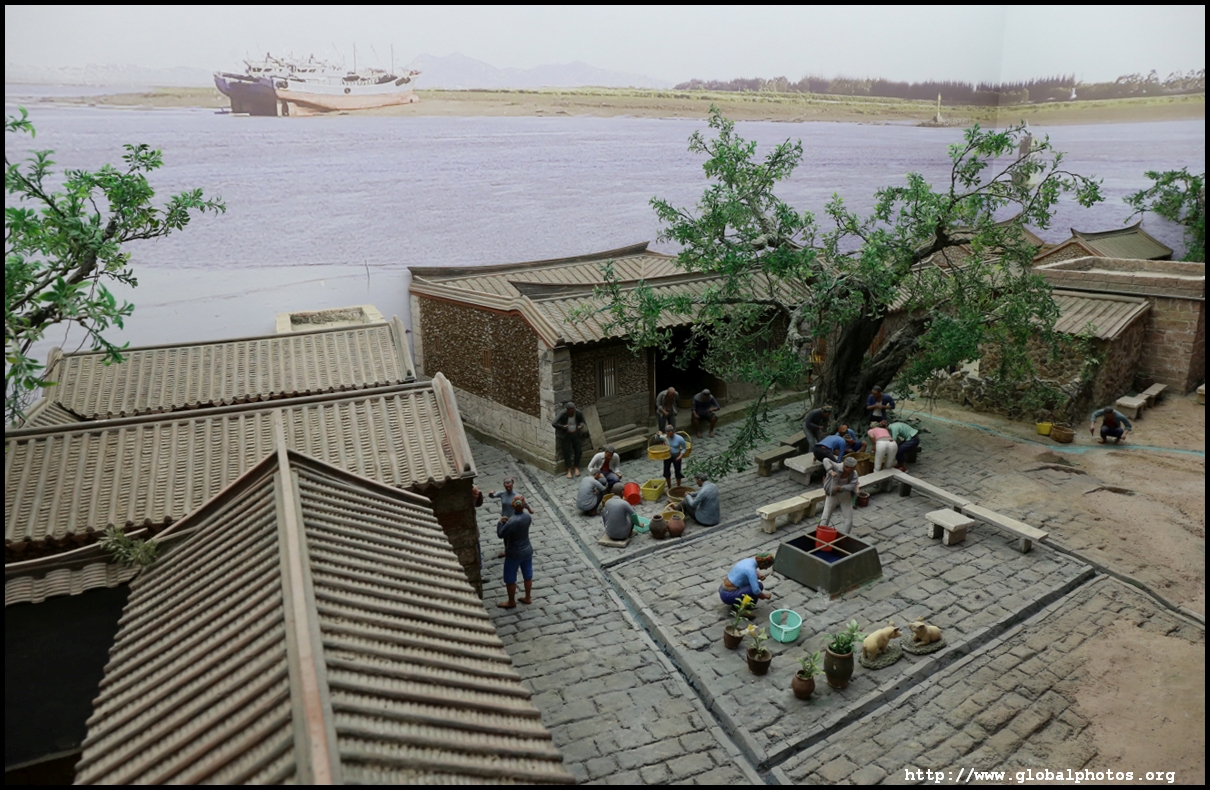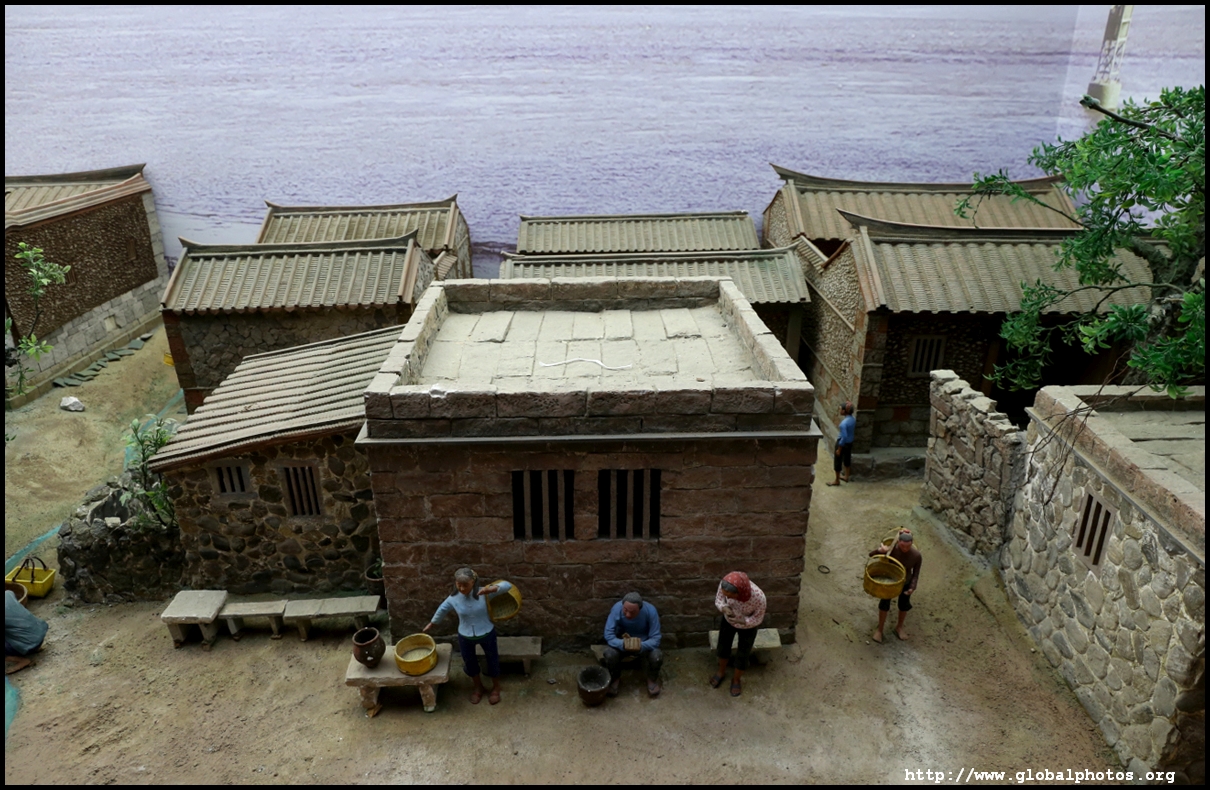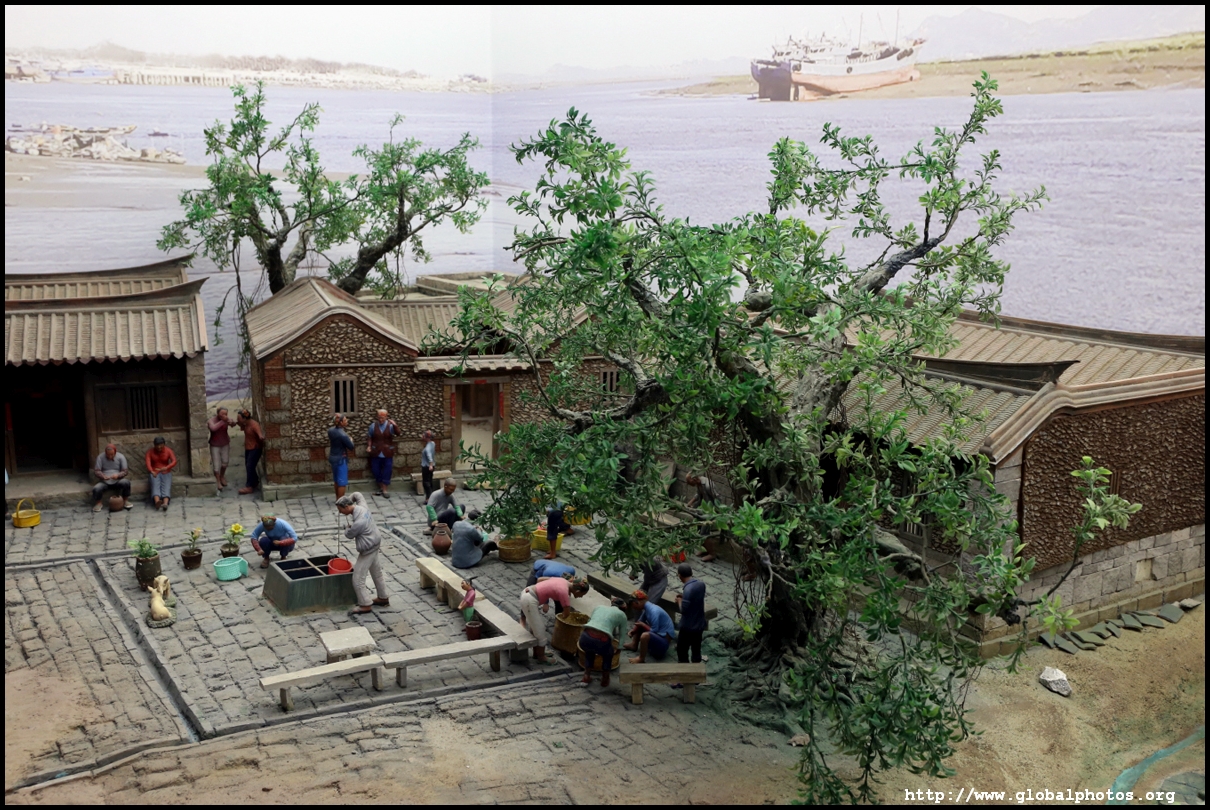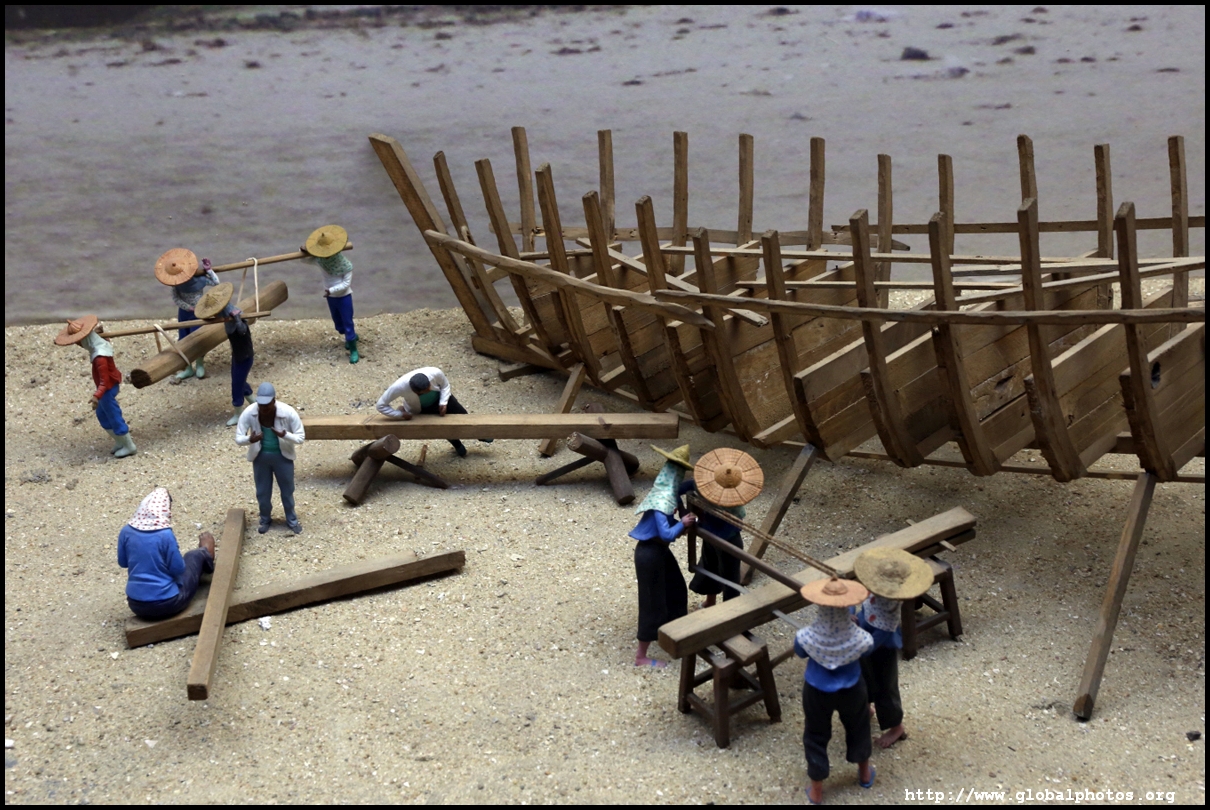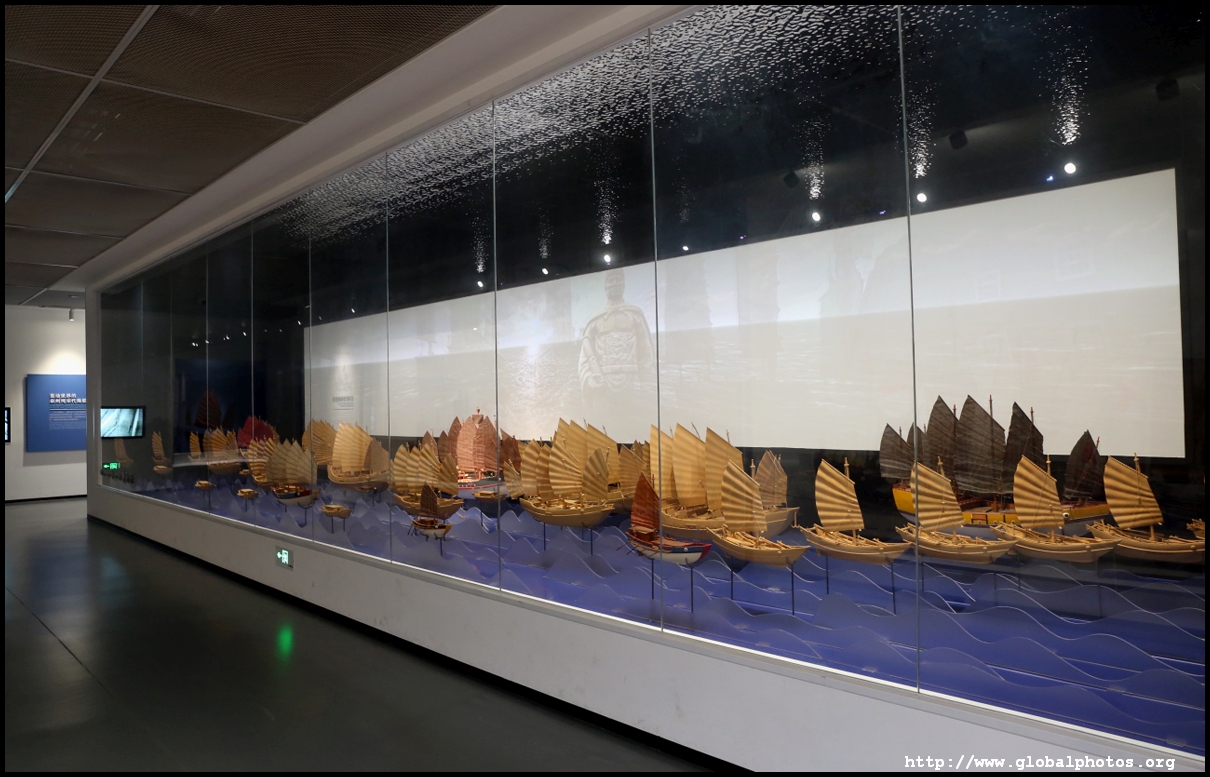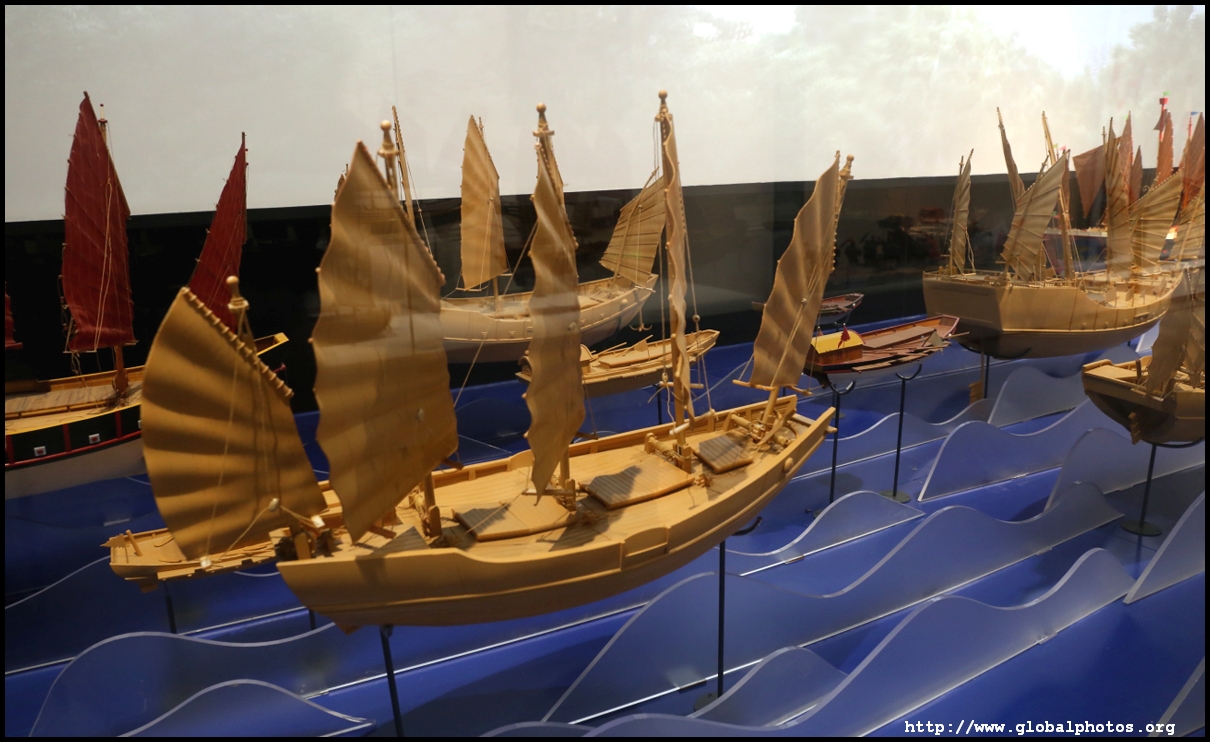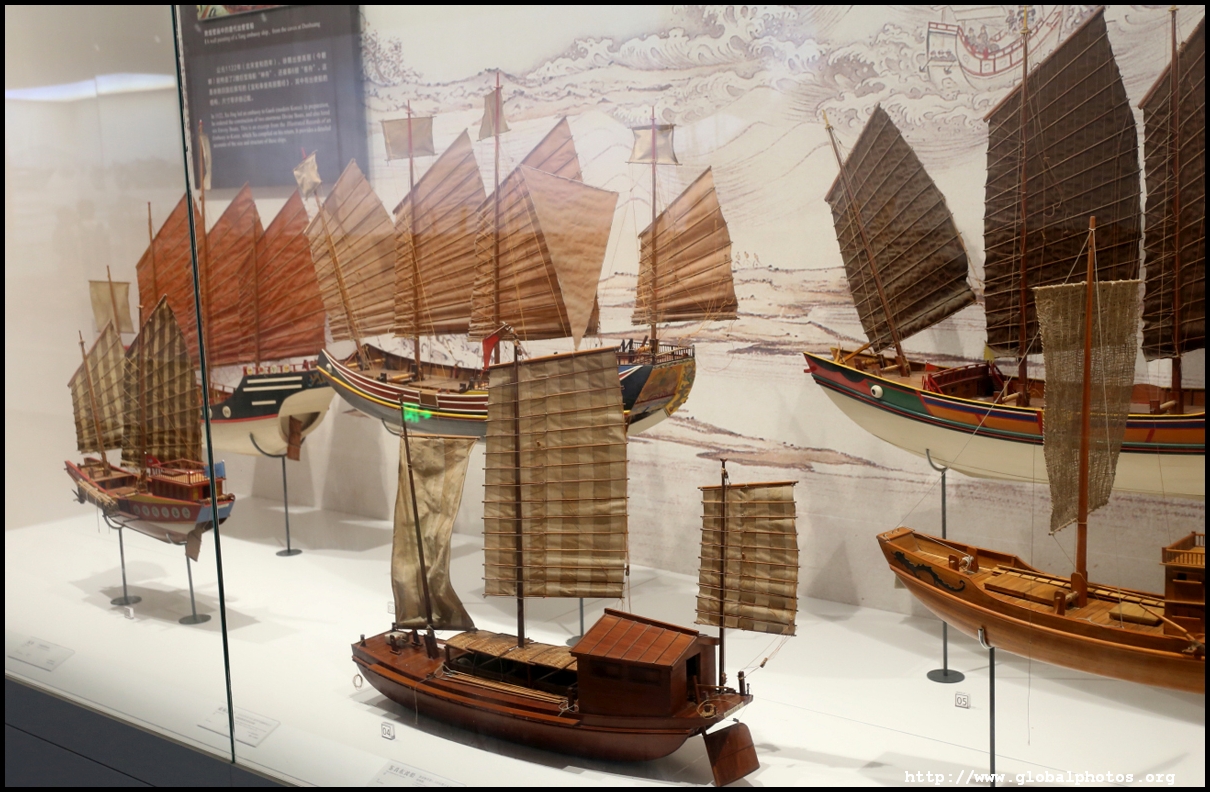Quanzhou Photo Gallery - Maritime Museum

Quanzhou played a key role on China's maritime Silk Road. With booming foreign trade, merchants from many parts of the world came to live in the city. These various cultures and religions were tolerated and you can see relics from the era in this air-conditioned museum. I needed a cooling break.Quanzhou was referred to in ancient times as Zayton by Arab traders. It was the country's greatest port during the Song and Yuan dynasties between the 10th and 14th centuries, when foreigners such as Marco Polo and Ibn Battuta came and wrote impressive descriptions of the harbour and markets. This exhibition shows Christian and Hindu relics, such as tombstones from the Yuan Dynasty. During that period, there were at least 3 Catholic churches and a Nestorian monastery here.
This Christian tombstone written in the Syrian language was unearthed beneath the North Gate in 1951.
This Christian tombstone is a lot more recent from the Qing Dynasty.
Depicted here is the Hindu goddess of wealth, Lakshmi.
This is a Hindu-style stone carving of Linga and elephant from the Yuan Dynasty.
Compass route books were nautical guides used by southern Fujian sailors.
The area around Quanzhou was a ceramic-production centre with reknowned kilns such as Dehua. Their wares were exported around the world.
This tombstone dates from 1292 to commemmorate a man who died at the age of 30. The description sign said it's a replica though.
This Gothic arched tombstone with winged patterns is also from the Yuan Dynasty.
This Hindu "devil" stone was unearthed from the Kaiyuan Temple.
There is also a large exhibition of ship dioramas upstairs. Fujian's fishing boats tend to have rounded hulls, narrow raised bows, and wide sterns shaped like a horse's hoof.
|
||
